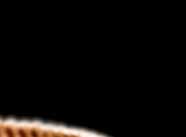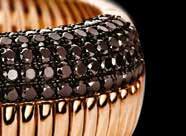CITTASLOW as a WAY OF LIFE
OWNERS MAKE DREAM COME TRUE
CASTLE WITH A RICH HISTORY
The international APPEAL of Masstricht

CITTASLOW as a WAY OF LIFE
OWNERS MAKE DREAM COME TRUE
CASTLE WITH A RICH HISTORY
The international APPEAL of Masstricht

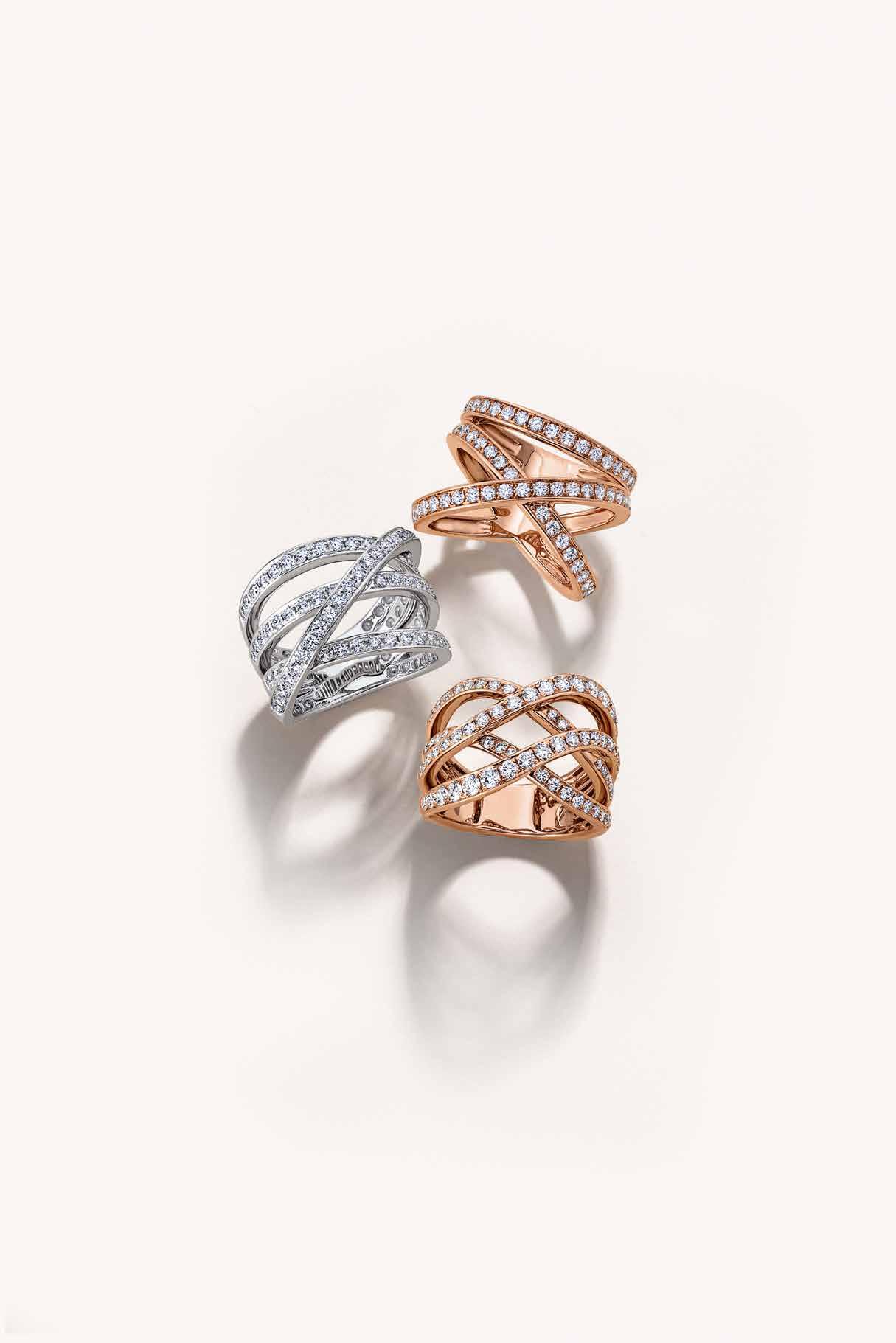
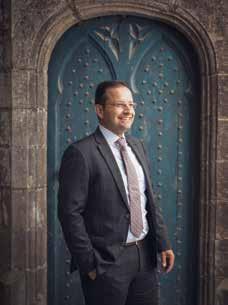
FOR OUR GUESTS ONLY THE BEST IS GOOD ENOUGH
Photograph Bart Wierzbicki
With over 800 years of history, the castle has long stood as a silent witness to time. Today, it begins a new chapter as Van Oys
Maastricht Retreat – a thoroughly modern sanctuary shaped by its past, but looking firmly to the future. The contrast between ancient heritage and contemporary luxury is striking. And yet, throughout the entire estate, the connection to the landscape and the legacy of this place remains ever present. The restoration has been carried out with great care and respect, preserving the spirit of the past while creating something new – a fivestar superior hotel and proud member of the Leading Hotels of the World. Together, these distinctions give Van Oys a truly unique place in the hospitality world. Perfectly located at the heart of Europe, Van Oys is just an hour from the international airports of Eindhoven, Brussels, Düsseldorf and Cologne. The centre of Maastricht – a city with Roman roots and a global reputation – is only minutes away. Known for the Maastricht Treaty of 1992, which laid the foundations of the European Union, the city is also home to world-famous events like TEFAF and the André Rieu open-air concerts. Still, the real charm of Van Oys lies in the experience it offers. Surrounded by green hills and peaceful countryside,
the retreat invites guests to slow down and enjoy life’s quieter pleasures. From fine dining in two outstanding restaurants, each led by a former two-Michelin-star chef, to intimate wine tastings in our vaulted cellar –everything has been designed to delight. The estate also offers beautiful spaces for meetings and events, ideal for both private celebrations and business occasions.
Van Oys isn’t just for hotel guests. Locals and visitors alike are welcome to enjoy the spa, the cuisine and the full range of experiences the estate has to offer.
That this transformation – from historic castle to modern retreat, complete with new buildings and a landscaped castle park – was achieved in just eighteen months is something we’re incredibly proud of. It’s a true reflection of the vision and drive of owners Michel and Leon Maes.
I have the privilege of leading a passionate, talented team here. Van Oys is the third major hotel project we’ve brought to life in the past ten years, each one created with the same dedication to excellence.
We know what a responsibility it is to care for a place like this, and to welcome guests from all over the world. That’s why we’re committed to offering something truly unforgettable. Because at Van Oys, only the best is good enough.
With warm regards, Marc Alofs,
managing director
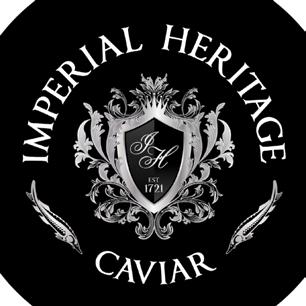
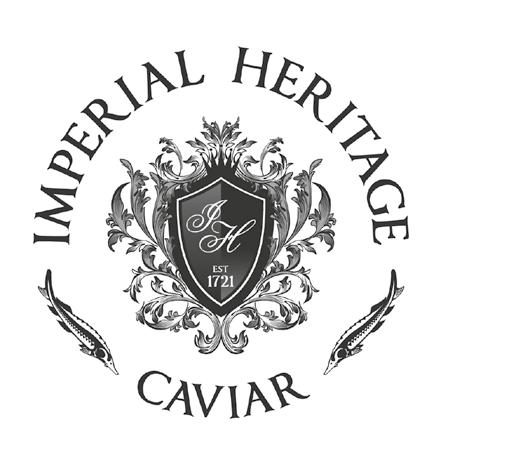
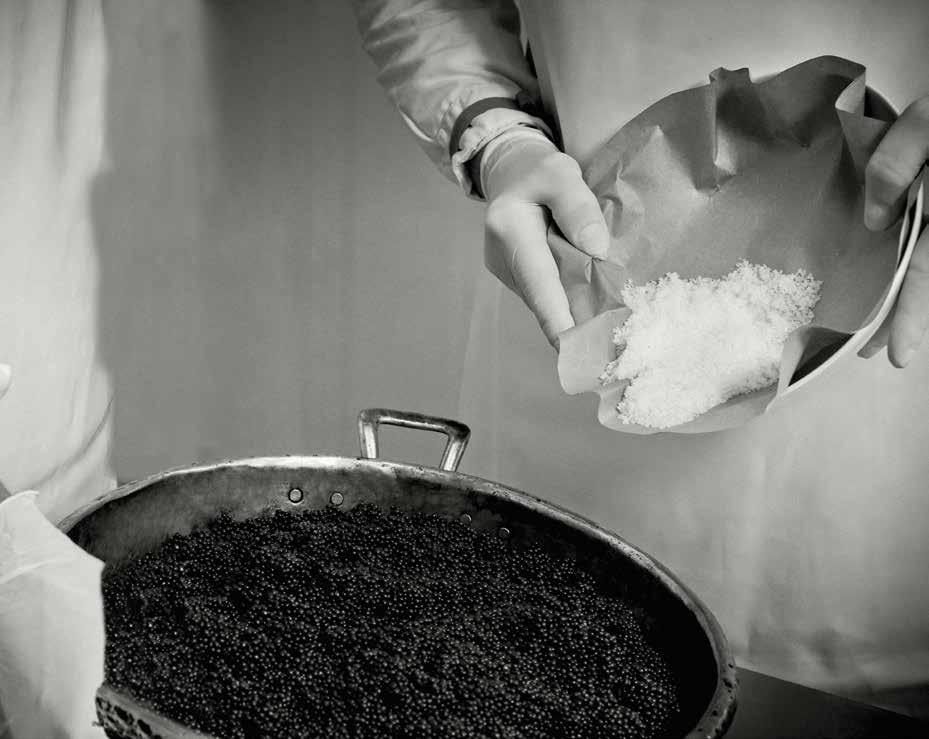
HeART of Slow is the house
magazine of Van Oys
Maastricht Retreat
Edition 1 – 2025
Publisher
Chapeau Magazine
B.V.
Het Bat 8
6211 EX Maastricht +31 43 321 6226
Opdrachtgever
Van Oys Maastricht Retreat
Kasteellaan 1 6245 SB Eijsden
Editorial Team
Jo Cortenraedt
Urbain Vandormael
Werner Loens
Frank Hovens
Final Editing
Rudi Smeets
Photography
Guy Houben
Rowena Rutten
Albert Roosenburg
Bart Wierzbicki
Image Editing
Joris Vroemen Design
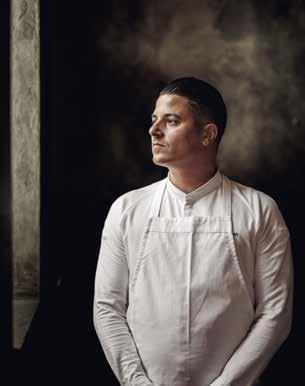
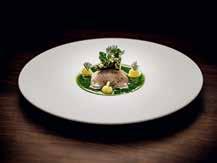
Transcreation
Coordination Kim Defaux
Anouk Franssen Printing Moderna – Paal Beringen No part of this publication
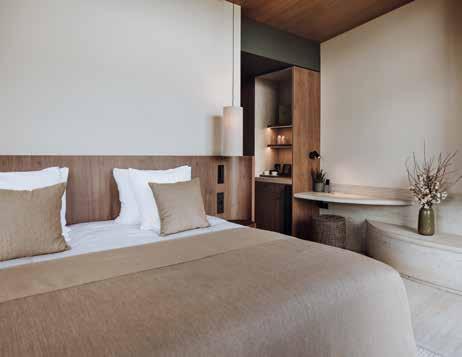
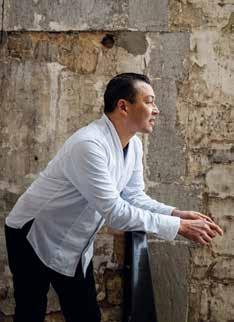
6 The Facilities
12 Retreat Map
14 The Founders: Michel and Leon Maes
18 Stéphanie Stulens on the Van Oys Concept
22 Proud Mayor Alain Krijnen
26 Team Profile: Kim Defaux
28 A Castle with a Captivating History
32 An Extraordinary Building Journey
38 The Delectable Flavours of Chef Guido Braeken
42 Pascal Jalhay: Championing Local Ingredients
48 Signature Packages
52 Spotlight on the Sainte Cécile Room
54 The Worldly Charms of Maastricht
57 Column by Werner Loens
58 Four-Hands Dinner: Guido Braeken & Viki Geunes
60 Cittaslow as a Foundational Principle
62 The Impact of Membership: The Leading Hotels of the World
64 Maybach: The German Flagship on Four Wheels
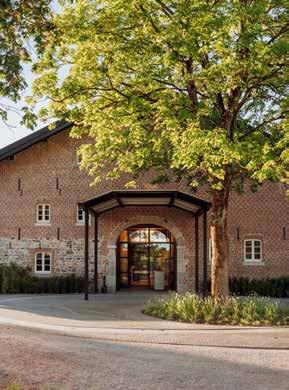
Text
Photography
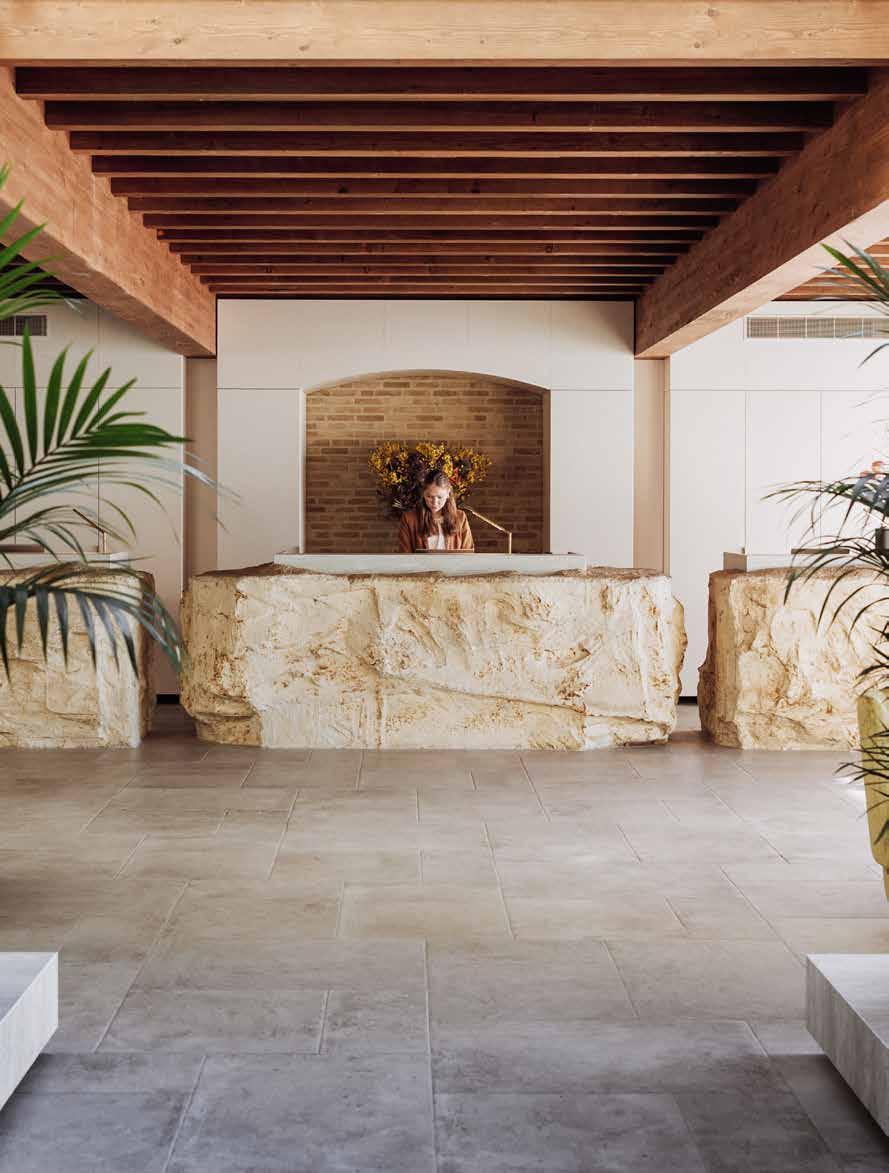
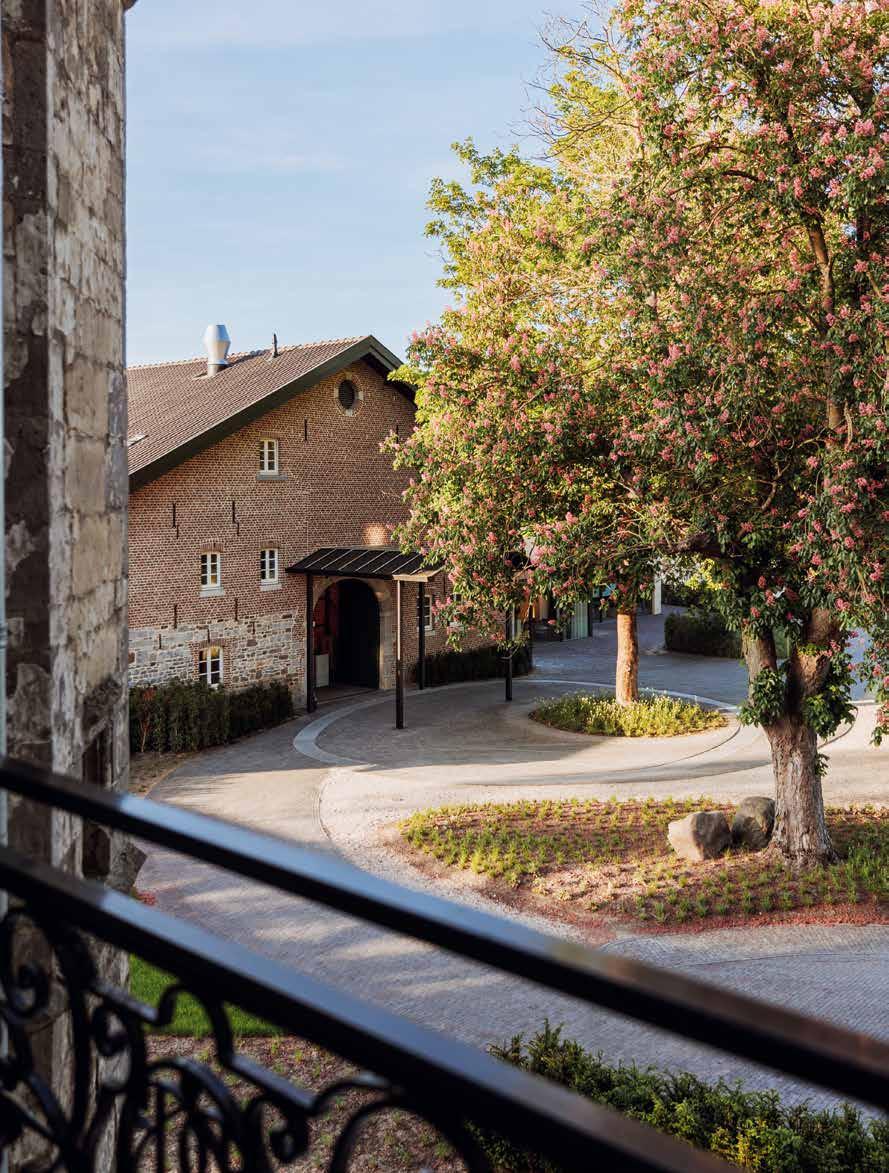
A hotel is a well-oiled machine. It runs not only on its physical infrastructure, but equally on the dedication and expertise of every single TEAM MEMBER – from top to bottom. Responsibilities and tasks are divided across multiple departments, each with clearly defined roles.
TThe many skilled professionals who worked tirelessly on the restoration of the Château, the Remise and the Carré delivered truly impressive results.
Van Oys Maastricht Retreat radiates both quality and authenticity. While the physical setting provides the foundation, in hospitality it is personal attention that makes the difference. That is why it is so important to coordinate tasks precisely and ensure that guests are never left wanting.
Guest Relations
Ensures a flawless stay through careful preparation, a warm welcome and close attention to all standard and special requests. Interaction between hotel staff and guests ensures that everyone is looked after promptly and with care.
Banqueting
Organises and facilitates meetings and events for groups of more than ten guests – from weddings and private parties to business events and informal gatherings. What sets Van Oys apart is that we deliver the same high level of quality, even for large groups, across a range of dedicated spaces, both large and small.
Reservations & Sales
Handles bookings for the hotel, restaurants and spa – both for individual guests and groups. Larger requests are passed to the Sales department, which creates bespoke events and stays through personal consultation. Striving for perfection in every event or experience is always the top priority. Revenue management also plays a key role, ensuring the right balance between guest types, occupancy and pricing.
Marketing & PR
Maintains relationships with domestic and international media and commercial partners. Our in-house team works closely
with marketing deluxe, a specialist agency for international communication, and Lincelot, a marketing firm that captures and shares beautiful moments through social media.
Housekeeping
Is one of the most vital parts of the operation. Every team member cleans and prepares your room with passion and precision, so you can relax in complete comfort and privacy.
IT
Keeps all departments and systems running smoothly. If there is a glitch or defect, action is taken immediately – 24/7.
Finance
Manages the financial flows within the hotel, ensuring that bookings, payments and invoices are processed accurately and efficiently.
Front Office
Is the first point of personal contact for our guests. Check-in is offered in a serene and welcoming setting, with a refreshment and a cool towel. Guests are then personally shown to their rooms. Front office staff are available at any hour of the day or night. At check-out, guests are welcome to book their next stay straight away.
Doormen
Greet guests with discretion and elegance, seamlessly coordinate transport and luggage, and are always ready with tailored recommendations.
Create by Guido Braeken
Located in a beautiful conservatory next to the Remise, this restaurant presents remarkable dishes using signature ingredients. Chef Braeken’s cuisine is rooted in French tradition and enriched with global influences, bringing a perfect balance of refinement and intensity to the plate.
Maes, Cuisine du Terroir
Celebrates the farm-to-table philosophy in
the Château’s elegant conservatory. Chef Pascal Jalhay works with seasonal, locally sourced ingredients from trusted producers within a 50-kilometre radius, both upstream and downstream. In our boutique, Maison du Terroir, you’ll find a curated selection of regional products and homemade delicacies – a tribute to the land and a way to take a taste of Van Oys home with you.
Master Florist Frank Bruninx
Reveals the beauty of flowers and plants by binding them perfectly and presenting them as part of the interior design. He also creates bespoke bouquets for weddings, birthdays and company celebrations.
Technical Services
Are the beating heart behind the scenes. This team handles day-to-day maintenance, resolves issues promptly and ensures all installations, rooms and public areas remain in perfect condition.
Wine Bar César
Is all about refined indulgence. Enjoy elegant bites and a carefully curated wine list in a warm, contemporary atmosphere –the ideal setting for an aperitif or a relaxed end to your evening.
Atelier du Vin & Atelier du Terroir
In the Carré, wine lovers will find a beautiful space where fine wines are poured – optionally paired with food. In the Atelier du Terroir, Chef Pascal Jalhay invites guests on a culinary journey of finesse and craftsmanship. He leads exclusive cooking workshops and inspiring masterclasses, where flavour, technique and experience come together in a unique setting.
Oysana Spa & Gym
While our full Spa & Gym will open in autumn 2025, we invite you to unwind in our exclusive pop-up spa until then. Surrounded by nature, the estate also encourages outdoor activity and fresh-air fitness.
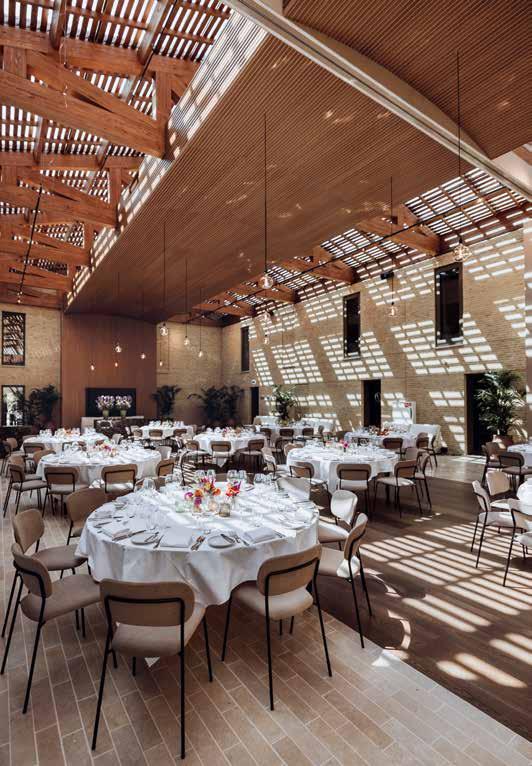
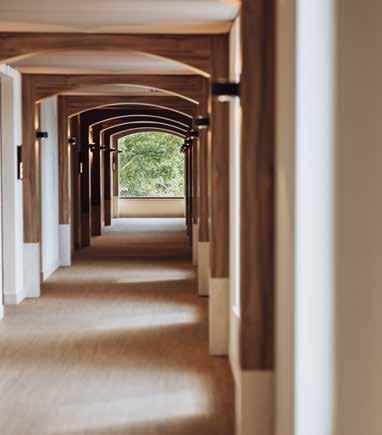
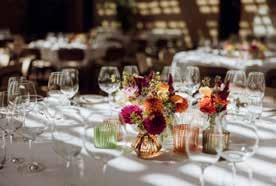
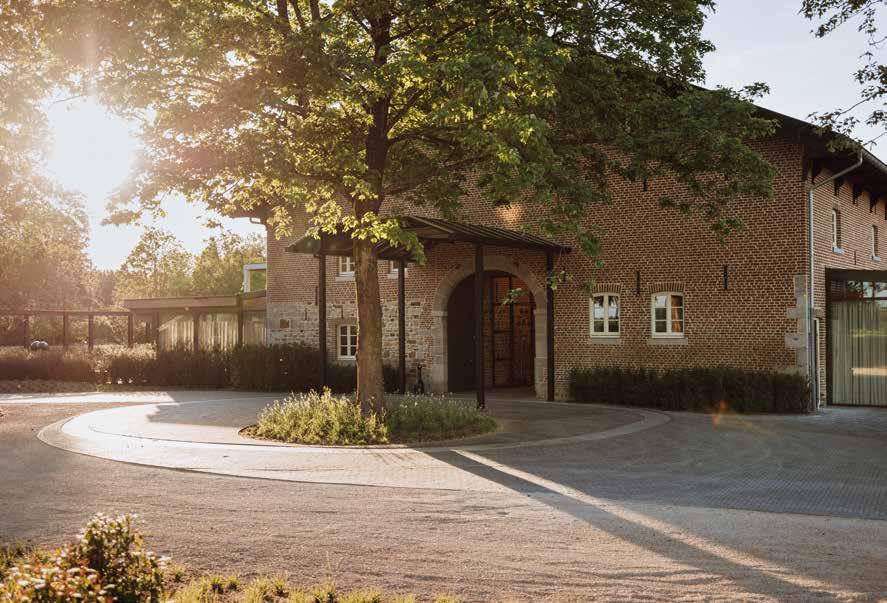
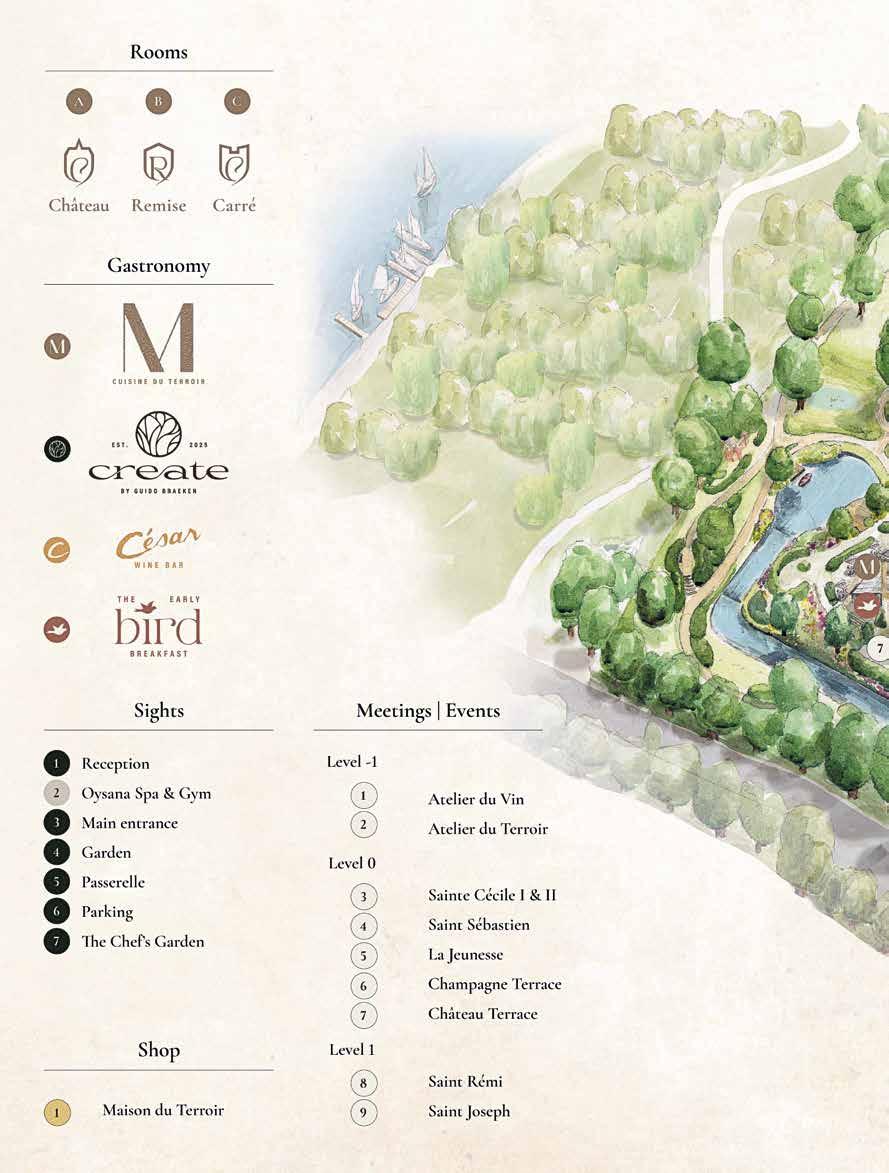
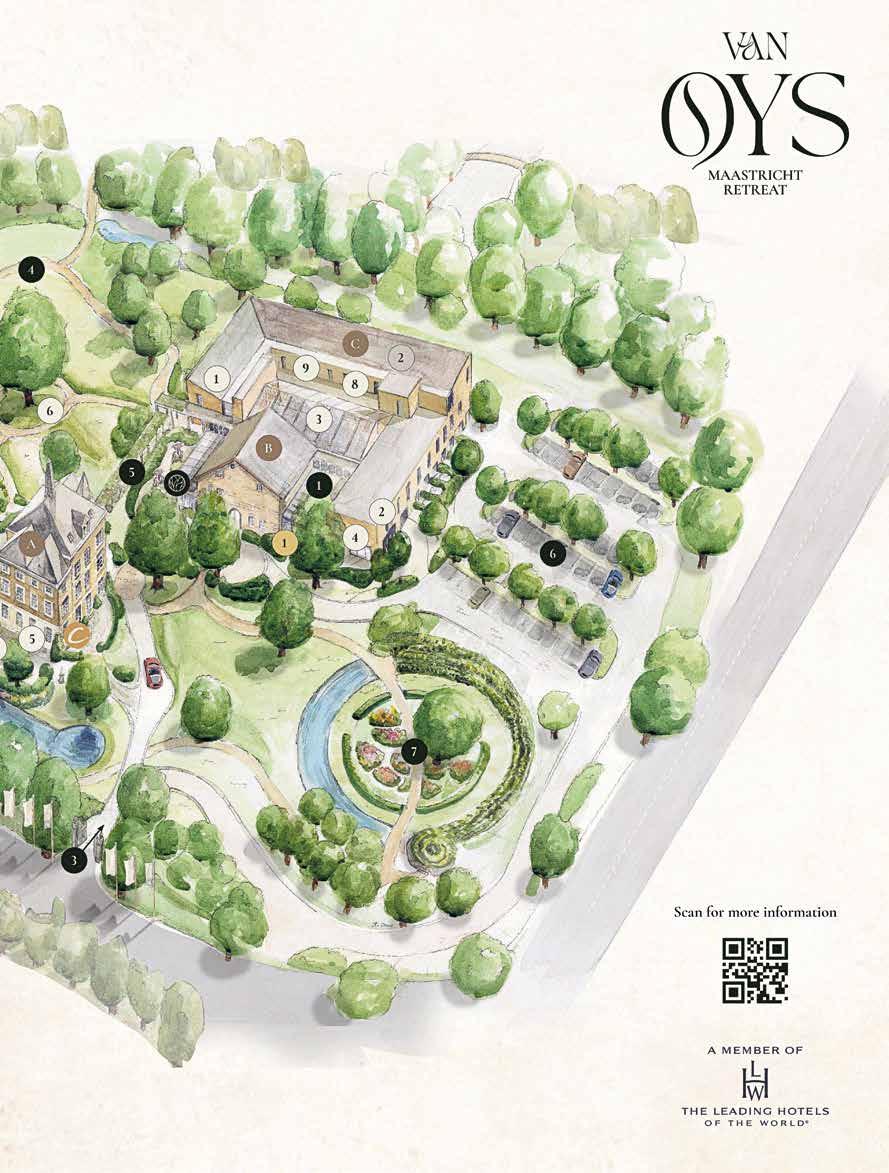
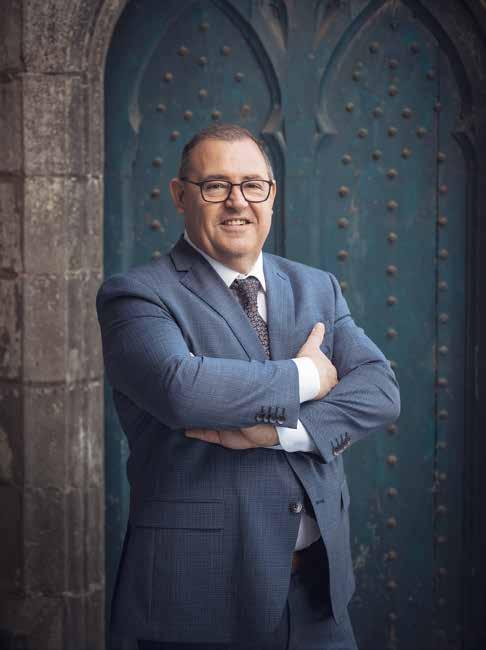
The opening of Van Oys Maastricht Retreat is unique for several reasons. First and foremost, its exceptional location, rich history and OUTSTANDING level of quality. But above all, the story behind the conception and execution of the project is one rarely encountered in the world of hospitality. Two brothers who truly embody the adage that DREAMS can indeed come true.
There are certainly some outward similarities between them, but in their actions and approaches, Michel and Leon Maes complement each other, each bringing a distinct style. Michel is the one whose mind overflows with ideas and who eagerly wants to put them into action. Leon is the calm, behind-the-scenes thinker who focuses on business considerations and, above all, the calculations needed to assess the chances of success.
For over 40 years, the Maastricht-born brothers Michel and Leon Maes have worked closely together. It all began with their jobs as train conductors, earning money was a necessity, and they came from a background where financing an extensive education was not an option. From a young age, they were taught at home to work hard with their hands. With that attitude, they used the hours after countless train journeys to renovate old buildings in Maastricht, selling them again at a good profit. In the early years, they did much of the work themselves, later expanding their team with skilled craftsmen. Eventually, they were able to give up their jobs at the Dutch Railways and fully focus on the real estate business.
A PRINCESS’S DREAM
Michel Maes had a special inspiration for turning Castle Oost into a hotel location. He himself lived there for sixteen years, and gradually a dream began to take shape in his mind. ‘I bought the castle from the Roosenburg family because my daughter once dreamed of being a princess in a castle. Yes, that’s really how it came about. In the early years, I didn’t think about turning it into a hotel, but when I was able to purchase the farmhouse across the road, the idea started to form. At first, the chances of getting a permit seemed slim because of how close we are to the water. After many years, we finally obtained approval and began developing the plans. My brother Leon and I had already completed a few smaller hotel projects in the city, but this was on a different scale and level of sophistication. At this level, we had not acted before.’
The division of responsibilities between the two was natural. ‘Michel is more involved with construction, materials and execution,’ Leon explains. ‘I focus more on purchasing and sales, financing and insurance. We are completely different people who perfectly complement each other. As with any
other project, we aim to get the most out of a location. At the same time, we fully understand that this requires bringing in competent professionals with real expertise, because we are not hoteliers ourselves. Together, you achieve extraordinary results, and this is truly Champions League level. We also notice that our enthusiasm inspires the people who work with us.’
When Michel Maes purchased the castle, it was in poor condition. ‘I could have started renovating it, but I wanted to do so in the original style. Over the centuries, so many changes had been made that it certainly hadn’t become more beautiful. Initially, the plan was to create a four-star hotel. After discussions with industry professionals, I realised we needed to add another building. You need a minimum number of rooms to achieve a return on your basic facilities. Eventually, I met Marc Alofs, a man with extensive management experience in fivestar hotels. We connected well and decided to collaborate. But then the ambition had to be raised from four to five-star superior. That also meant not 100 but 81 rooms, a wellness area, separate event spaces and not to forget, top-tier gastronomy. That’s how the concept developed.’
The Maes brothers consider membership in Leading Hotels of the World a conscious and wise choice, Leon Maes explains. ‘We didn’t want to be part of a chain but to maintain our own identity. This organisation is perfect for that. It includes unique hotel locations, all of high quality and with their own character. Gastronomy had to play a central role in the entire concept. That’s why we attracted no fewer than two Michelin-
starred chefs, Guido Braeken and Pascal Jalhay. Like us, they share the motivation to deliver nothing but the very best for our guests.’
During the extensive renovation, Michel Maes was on-site daily to oversee everything. But that is now changing. ‘My wish is to remain connected to this place for a long time to come. But it’s not about possession for me, it’s about realisation. Eventually, someone will take my place – that seems only logical, as none of us live forever. Hopefully, this project will endure for many years. That’s why we have used only the highest quality materials everywhere, from the chimney mantels to the new slate roofs. I love beautiful old buildings. When I walk through Venice, I truly enjoy it. How is it possible that in the past, without all the modern equipment, they built with better quality than today? That is something we should really consider.’
Leon Maes was certainly involved in the construction too, but more from the office, at a distance. ‘Of course, it was exciting. This is not something you do lightly. But I never get stressed – I’m too pragmatic for that. If I were stressed, I would only pass on panic to others, and that achieves nothing.'
Michel Maes also wants to be actively involved in the field of art and culture. In Maastricht, the old Opveld monastery chapel was restored and transformed into a stage for cultural talent. ‘It’s a kind of small theatre where, for example, young talents from the classical music world can gain valuable stage experience. They don’t
have to pay to perform. The audience pays a modest entrance fee. We receive no subsidies; additional funding is needed, but I don’t mind. I was shocked by how difficult it is for young people in this sector to break through and build a career. I want to offer them extra opportunities in this way. I don’t claim to be an expert, but over the years my interest has grown. Growing up, we weren’t really exposed to art and culture, but my many travels have broadened my appreciation.’
Michel Maes has drawn inspiration from his travels around the world for many years. ‘I’m always looking to broaden my horizons. Even at a young age, I didn’t choose the typical destinations like Mallorca or Ibiza – I preferred places like Cyprus or Turkey. I wanted to immerse myself in new cultures. Over the years, I’ve visited countries such as Iran, Syria, Mali, Antarctica, Nepal, Malaysia, India and many more. And no, definitely not always in five-star hotels. On the contrary – I found it far more interesting to live among local people for a while. I learned a great deal from those experiences, both socially and culturally. But I also realised how much arrogance we’ve developed in Western Europe. We often think we know best, but in many areas, we’re starting to fall significantly behind. Developments in other parts of the world are moving at a much faster pace. In some countries, for instance, it's unthinkable that a business would have to wait years to be connected to the power grid. A lot of it comes down to ambition. And that, at least, is something we have in our DNA.’
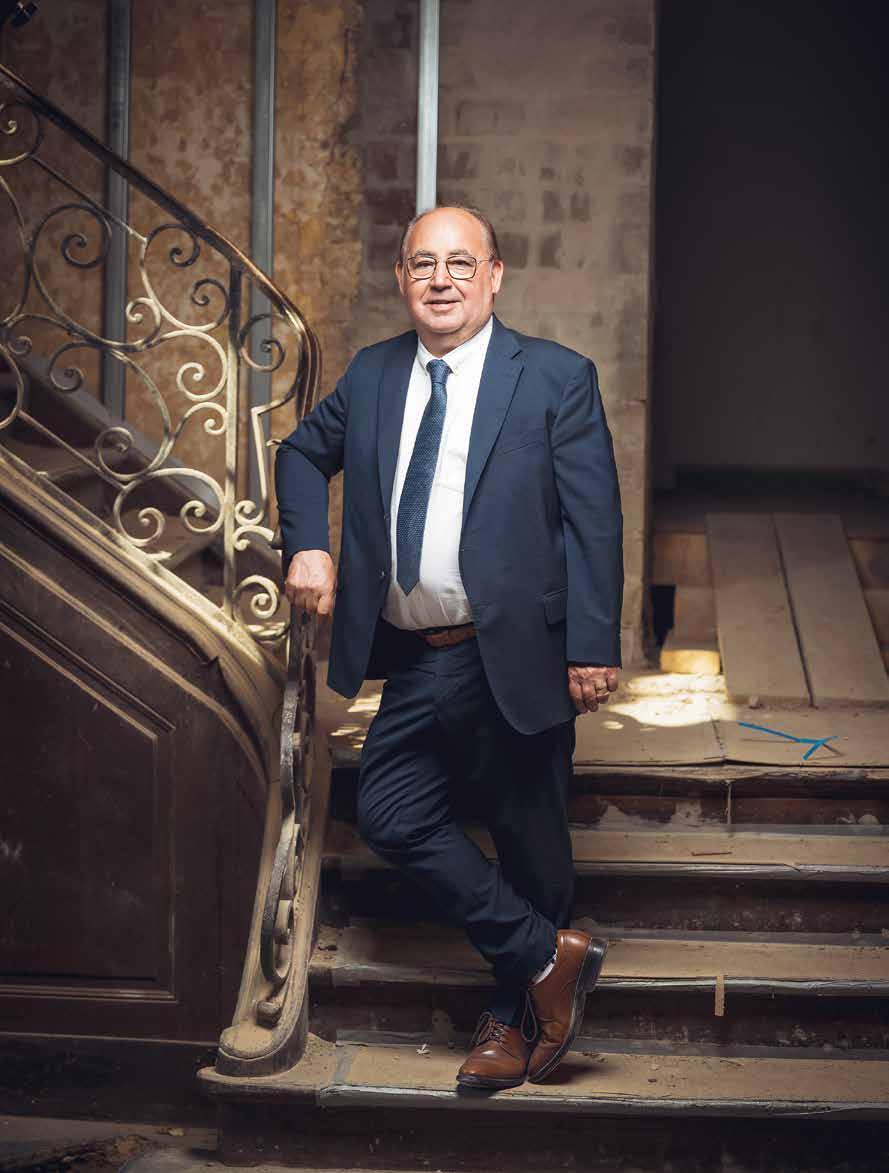
There are city hotels, luxury hotels, budget hotels. Van Oys introduces something new: the hotel with a big heart.
Text
Urbain Vandormael
Photography
Bart Wierzbicki
The Netherlands is home to many three- and four-star hotels, but relatively few luxury and niche properties. The same applies to Maastricht, which is part of the reason why Van Oys Maastricht Retreat set its sights firmly on the highest possible standard: five-star superior status and membership of Leading Hotels of the World (LHW).
Not every hotel that applies is selected – far from it. This exclusive global organisation imposes exceptionally strict quality standards, both in terms of hardware (infrastructure, design, materials) and software (service, atmosphere, guest experience). Van Oys Maastricht Retreat passed the LHW quality inspection with flying colours, becoming the only luxury hotel in the region to do so. The challenge
now is to live up to the high expectations of LHW guests.
Stéphanie Stulens, maître de maison, offers a look behind the scenes: ‘A hotel that has been running for ten or twenty years has usually overcome its early challenges and runs mostly on routine. Van Oys Maastricht Retreat, by contrast, is brand new. That means the entire team is also new – yet the hotel must operate flawlessly from day one. LHW guests are used to being pampered, to having every need anticipated. They’re not interested in how quickly this project was completed. For them, only the best is good enough, whatever it takes. That naturally puts a great deal of pressure on the staff.’
Many team members were hired months before the opening, giving them time to prepare for their roles. ‘To ensure
everything runs smoothly, we introduced a trial period shortly before opening. That allowed the team to get to know each other and become familiar not just with their roles, but also with the character and layout of the hotel. Every position plays a vital role. If we want to achieve top quality from day one, structure and procedures are essential. After all, a chain is only as strong as its weakest link.’
‘This project wasn’t the first at this level for me and my husband, Marc Alofs. Together, we successfully led two hotels to five-star superior status – he as managing director, and I as his right hand. We divide the responsibilities according to our strengths, his as a man, mine as a woman. That
brings a different kind of empathy and a complementary approach – we balance each other well.
I have to be honest: from day one, we could count on the support of several key individuals who made the transition to Eijsden with us – some from Antwerp, others from the local area. Thanks to their expertise and support, the opening went smoothly.’
Most hotel guests have no idea what happens – or must happen – behind the scenes to make a hotel run like a well-oiled machine. Everything you encounter in daily life, at home or at work, is also present in a hotel. ‘There are a thousand and one tasks to complete. Some may seem more or less important at first glance, but in reality, every task matters. All it takes is one housekeeper forgetting to restock the toilet paper, or a kitchen assistant adding salt instead of pepper, and suddenly there’s chaos. In a hotel organisation, everyone is important. That goes for all departments –there’s no hierarchy in terms of significance. Some generate revenue, others incur costs. Either way, the goal is for everyone to do their job as well as possible and give their very best, every single day. That’s why every team member – at every level – deserves the same respect and appreciation.’
‘Our team includes around one hundred members from all walks of life, evenly split between men and women, across all levels. They’re naturally multilingual, with professional knowledge and experience –or they show such great interest, ambition and potential that we’re happy to give them the opportunity to learn and grow. We are a new company. That gives ambitious individuals the chance to move up and eventually take on leadership roles. This is something that comes up frequently in conversations with job applicants. The experience of working in a Leading Hotel of the World can also benefit them if they continue their careers elsewhere. Our sector tends to have relatively high staff turnover, and international experience is
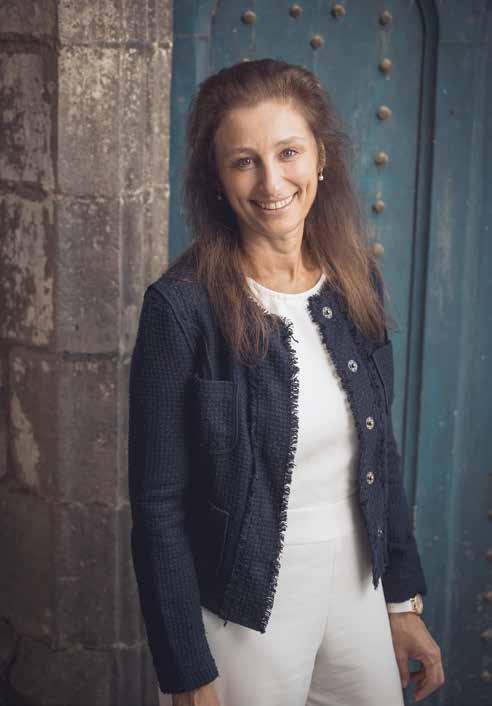
often key to advancing.’
On several occasions, Stéphanie actively sought out team members. ‘One day, a colleague and I walked into a nearby reception centre for Ukrainian refugees. That single visit resulted in five enthusiastic and hard-working new hires. We also reach out to people who, for various reasons, don’t find their way into the regular job market, but who do have skills we can put to use. For example, several individuals with disabilities from the local community designed a brooch now proudly worn by our front-office team. Others help with light manual tasks like folding guest towels. One young woman with Down syndrome created a papier-mâché giraffe, which now has a place of honour in one of our spaces.’ Connection to the local community,
traditions and culture is a golden thread in the life story of our founders, and now – under the philosophy of Cittaslow – in the identity of the hotel as well. For example, Van Oys offers students from the Maastricht Academy of Fine Arts a platform to showcase their work – and perhaps even find a buyer among our guests.
Of course, the team is proud of our five-star superior classification and membership of Leading Hotels of the World. ‘But above all,’ says Stéphanie, ‘we are a hotel with a big heart. A big heart for our guests – and for all the team members who give their very best, every day. That extra something can’t be bought. And at the end of the day, it’s what places Van Oys Maastricht Retreat in a class of its own.’


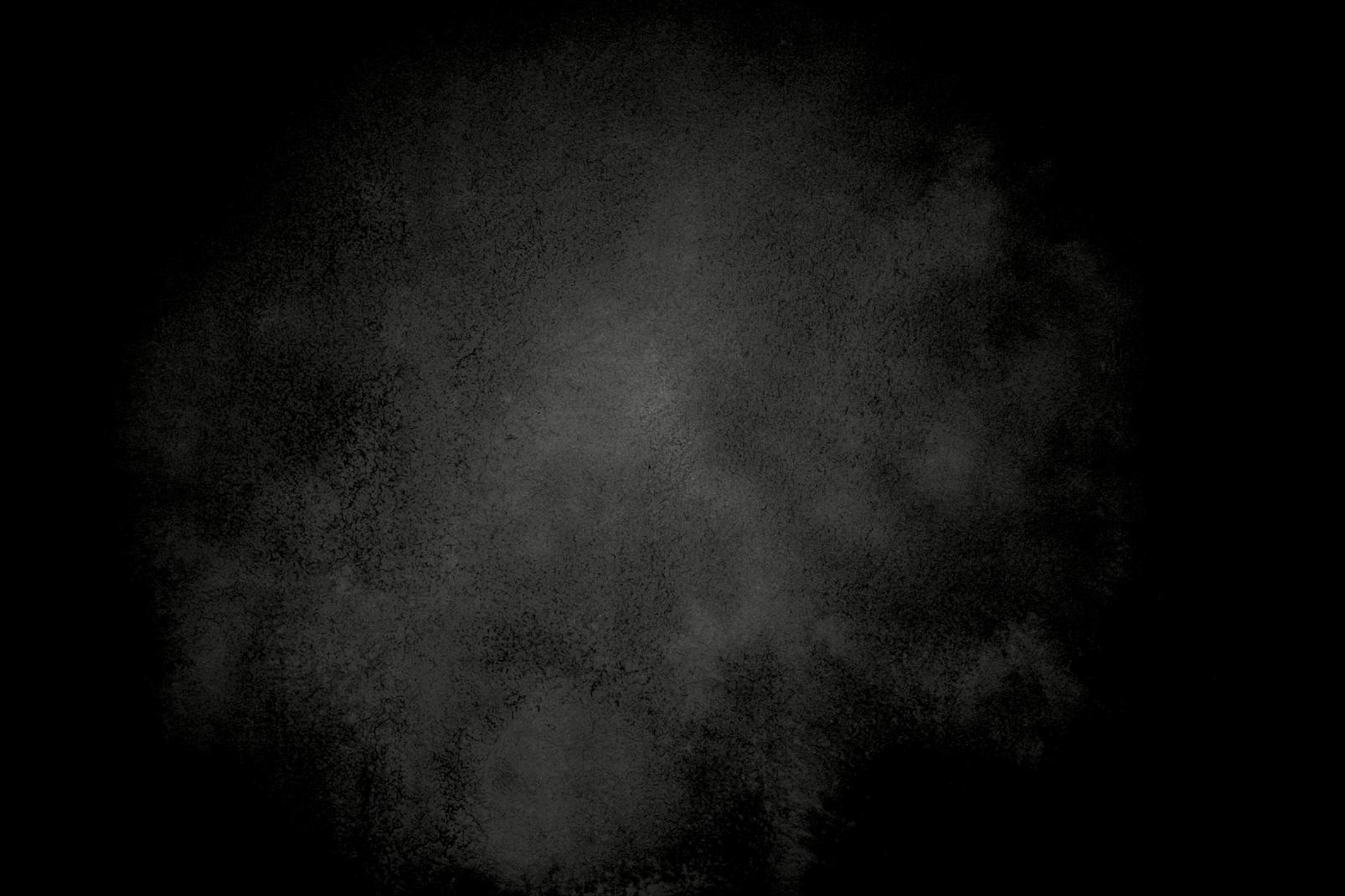
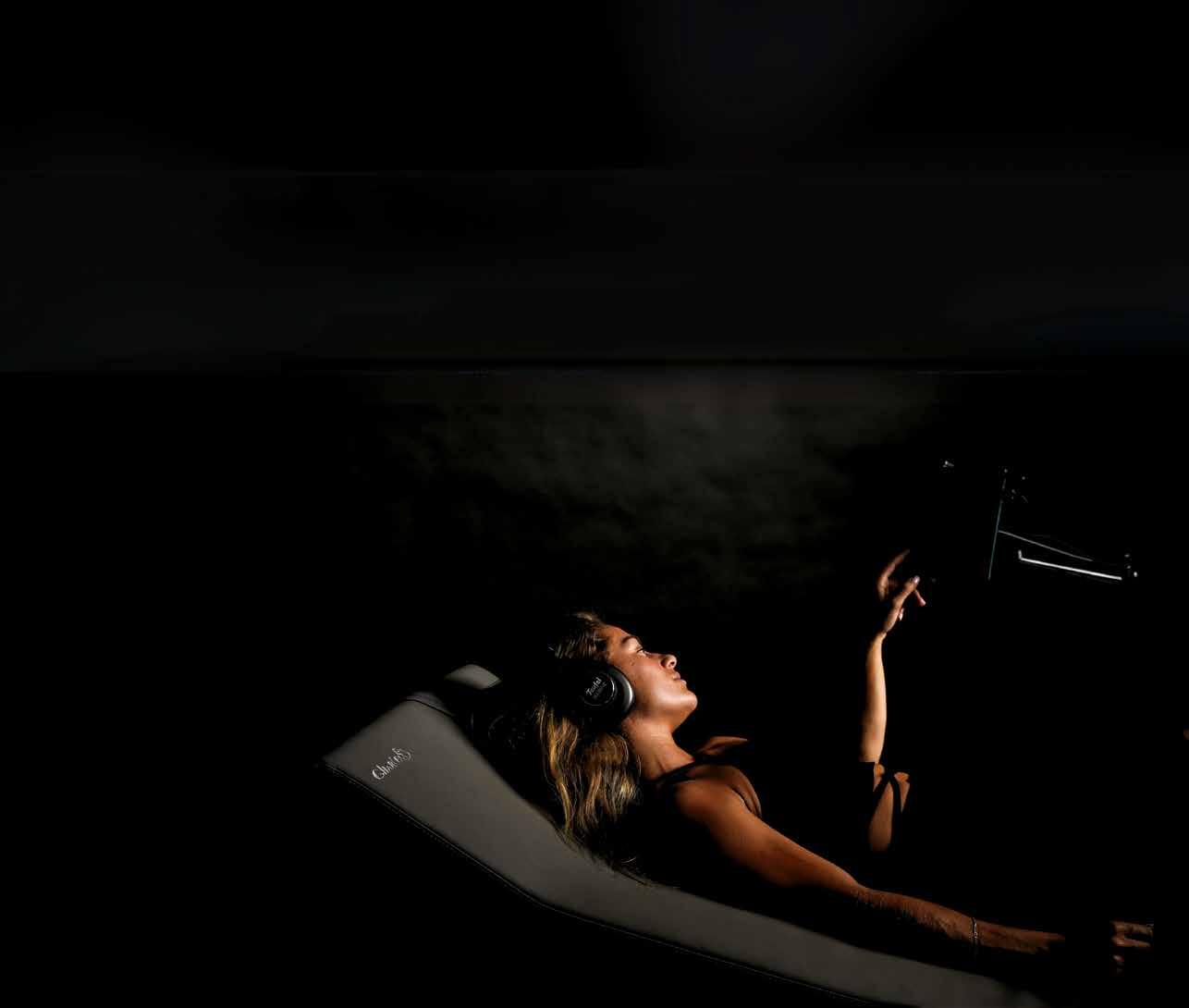

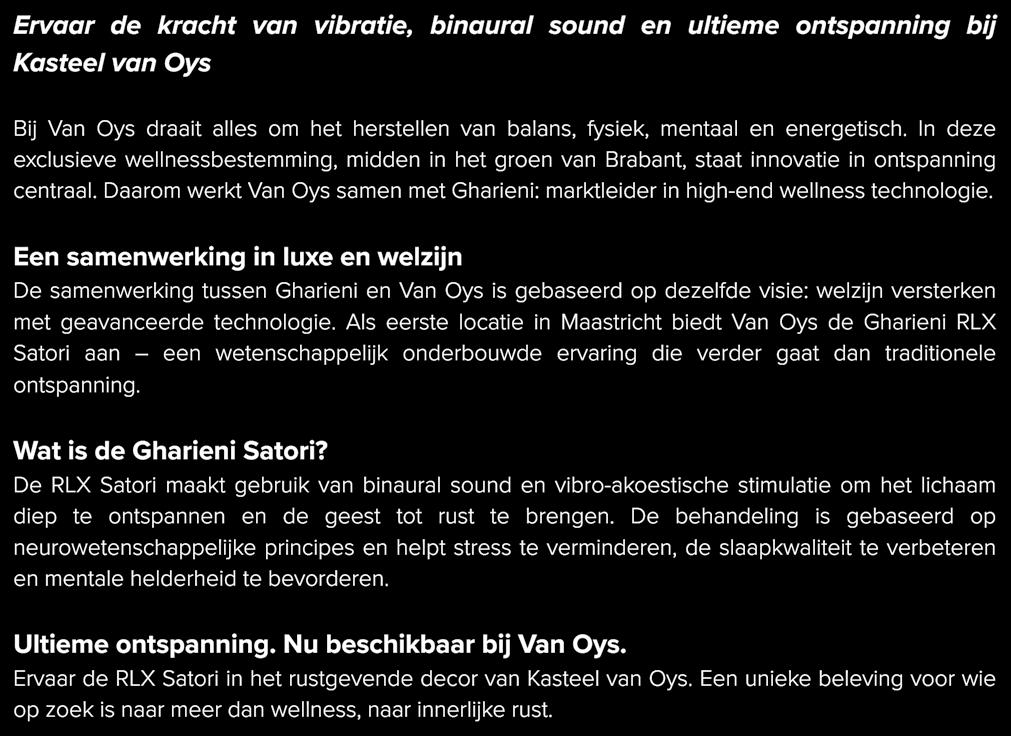




Although the name might suggest otherwise, Van Oys Maastricht Retreat is not located within the city limits of MAASTRICHT. That boundary lies two kilometres further on, yet from an international perspective, choosing Maastricht as the reference point makes perfect sense. The mayor of EIJSDEN-MARGRATEN has no objections.
Text
Photography
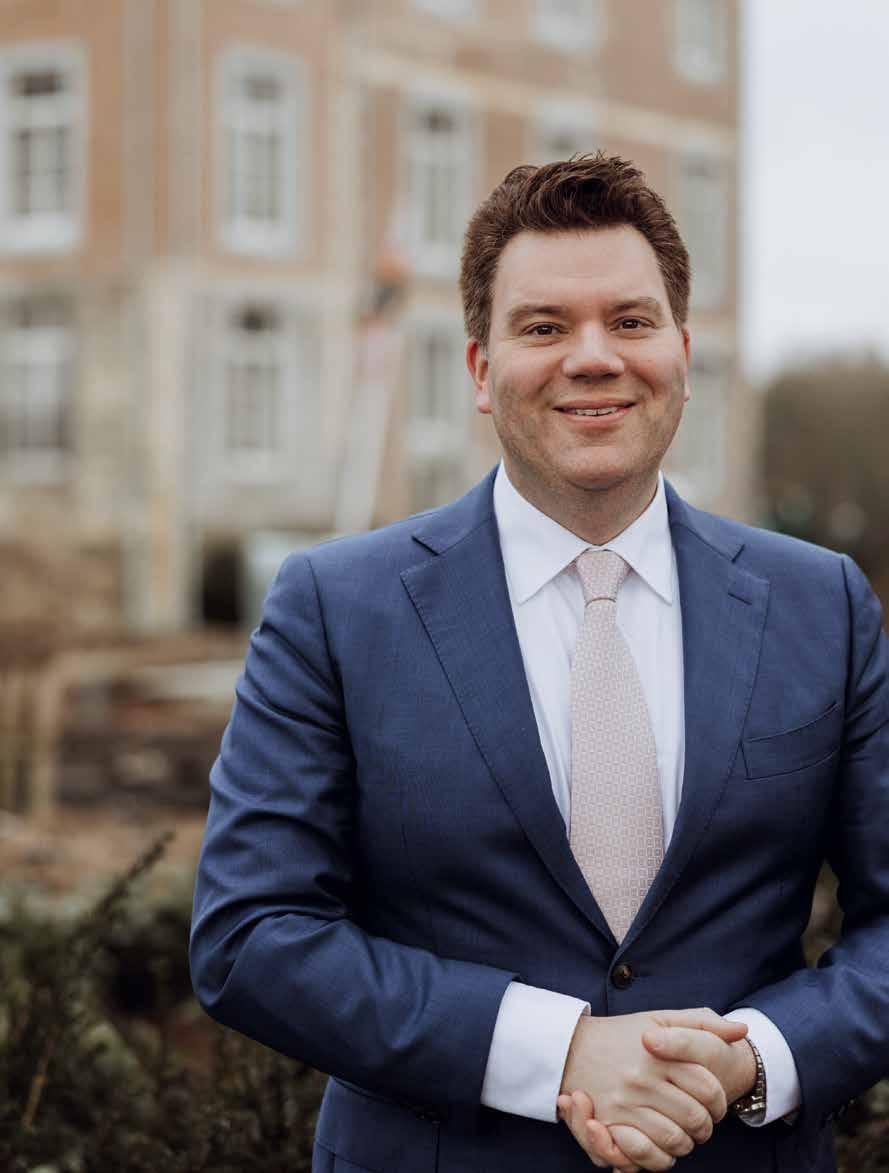
It’s rare these days for a major construction project to be met with unanimous support from local residents. According to co-owner Leon Maes, not a single formal objection was submitted – a remarkable contrast to what their company is used to.
Mayor Alain Krijnen articulates the enthusiasm Van Oys Maastricht Retreat has sparked within the municipality of EijsdenMargraten: ‘Of course, the project had to comply with the usual rules and regulations, but as a council, we immediately recognised the opportunities it brings for the wider community. As in many villages, several local amenities in Oost-Maarland have been under pressure due to social change. We see Van Oys as a driving force for the entire village and of major significance to the region. Including ‘Maastricht’ in the name is entirely understandable given the focus on an international audience. We are extremely proud to have the retreat within our municipal boundaries – its prestige benefits the entire community. It breathes new life into the village.’
During construction, Mayor Krijnen made regular site visits to monitor progress. ‘I had been mayor for less than a week when I had the chance to speak at an open day here. Work had only just started, but I could already sense the energy and ambition of Michel and Leon Maes to create something truly exceptional. Saving such a remarkable monument from ruin is already a huge
achievement. But the choice to aim for the highest standards has inspired us on the municipal side too – to improve local infrastructure, enhance the area and initiate new residential developments. That’s the tangible side, but just as important is the owners’ effort to involve the community. They’ve invited local associations on several occasions, even during the build phase. You can feel the pride and sense of ownership among residents – it brings people together’. Another reason for the mayor’s enthusiasm is the Cittaslow certification, which Van Oys will champion. This label stands for quality and sustainability over mass tourism. ‘That aligns perfectly with our identity. Our municipality has been committed to Cittaslow values for some time. We already had a so-called five-star landscape in the beautiful Heuvelland. Now we also have a five-star superior hotel. Everything is falling into place.’
The hotel’s opening gives the local authority new momentum to improve the region’s accessibility for visitors. ‘The hotel is right next to a nature reserve along the Meuse River. Expand the circle a little and there’s even more to discover. A new bridge is being constructed across the Albert Canal in neighbouring Belgium – great news, especially for walkers and cyclists. We’re situated within the historic triangle of Maastricht, Liège and Aachen, which has played a significant role in European history
over the centuries.
Guests can visit these three fascinating cities, as well as the stunning landscapes that connect them. There’s also an important link with the American military cemetery in Margraten, where over 8,000 soldiers are buried – those who helped liberate the region during the Second World War. That site alone receives around 200,000 visitors a year.’
According to Mayor Krijnen, the opening of Van Oys Maastricht Retreat also has great relevance for Maastricht University, the Brightlands campuses with their innovationdriven companies, the MUMC and the ambitious Einstein Telescope project, which is planned for this very region and will attract leading scientists from around the globe. ‘We can combine these international connections with authentic Limburg hospitality and exceptional gastronomy – a perfect match. Add to that world-class events like TEFAF, Rieu, Preuvenemint and JIM, and you have a powerful synergy for the entire region.’
The mayor is also realistic about the challenges: ‘Administrative procedures in this country can be frustratingly slow. I advocate for better alignment between ambition and feasibility. There’s a proposal for an electric water taxi between Van Oys and Maastricht – a brilliant and, above all, sustainable idea. It could be a true differentiator. I sincerely hope it becomes reality.’
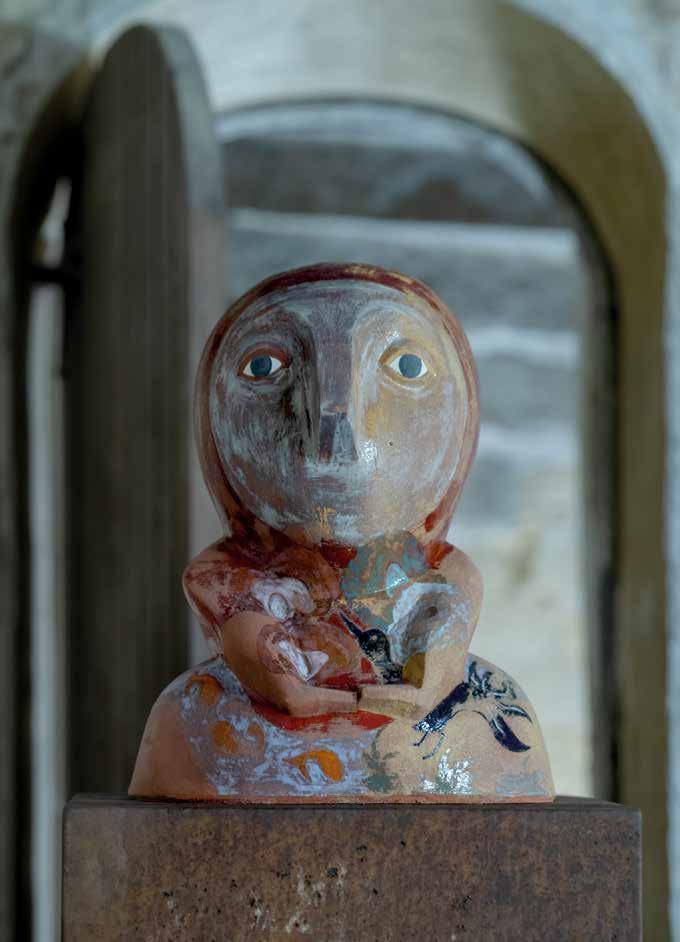

‘I am a team player who enjoys leading by example’
Director
of Sales & Revenue Kim Defaux is a key figure in the management team at Van Oys Maastricht Retreat. Along with her team, she is responsible for generating a steady stream of revenue. From hotel rooms to meeting spaces and event venues, sales across all segments fall under her remit – no small task in a region already rich in hotel offerings.
For Kim, it feels like a childhood dream come full circle. ‘When I was little, my brother and I would often play makebelieve – I ran a travel agency, and he was the customer looking for the perfect sunny getaway. Now, all these years later, I’m selling rooms and event spaces at a Leading Hotel of the World, just fifteen minutes from where I grew up and now live with my own family. It feels like everything has come together.’
FROM PASSION TO PROFESSION
Travel, in the broadest sense of the word, runs in her veins. ‘I’ve been lucky enough to turn a passion into my profession. As a teenager, I worked part-time in hospitality. It’s a demanding but rewarding world that teaches invaluable life lessons – from social skills and the value of money to learning how to work hard, often without much recognition. It’s learning by doing. Hospitality isn’t for daydreamers. While studying Hotel Management at Tio Business School in Eindhoven, I completed internships in Greece and Curaçao. That international experience opened me up to new cultures and broadened my horizons. After graduating, I was able to start immediately at Bilderberg Kasteel Vaalsbroek in Vaals, where I had done my internship.
A year and a half later, I happened to cross paths with Marc Alofs. At the time, he was Managing Director at La Butte aux Bois in Lanaken. When a position opened in the sales team, he reached out to me.
That’s when I discovered the world of luxury hotels as a dynamic and inspiring environment to work in. Years later, he’s my boss again – this time at a Leading Hotel of the World. Life keeps moving.’
NOBODY IS PERFECT
‘Being a member of Leading Hotels of the World is the highest accolade in our industry. For our guests, who come from all over the world, only the best will do. That means both hardware and software must be flawless – every day, around the clock. As a member of the pre-opening team and now Director of Sales & Revenue, I’ve been involved from the outset in building the Van Oys team. The management sets high expectations for expertise and commitment, while also recognising that mistakes will inevitably happen. Nobody is perfect. What matters is that we learn from our mistakes – and that applies to all of us. I prefer to lead by example, rather than criticise colleagues. You win as a team, and you lose as a team.’
‘Respect for the efforts and qualities of others is a principle that also shapes our view of the competition. Van Oys Maastricht Retreat is the first Leading Hotel of the World in this region, but that doesn’t mean we look down on other four- and five-star hotels in the area. Rather than undercutting each other or engaging in price wars, we should all strengthen one another – and the region – by focusing on
our own distinct identities.
In the case of Van Oys, that identity lies in the historic and authentic charm of the castle, our rural setting just a stone’s throw from the city centre, the planned water taxi connection and our exceptional culinary offering built on fresh, local produce from regional partners.’
‘Our connection with the South Limburg community and its traditions is reflected throughout the hotel – from the naming and decor of our rooms and event spaces to our service offering. In our boutique, Maison du Terroir, guests can purchase take-home creations by our Culinary Director, Pascal Jalhay, alongside regional products from our local suppliers. Naturally, we also highlight our distinctive spa experience, which invites guests to unwind completely. The moment they set foot on the estate, it feels as if time stands still.’
How does Kim combine a demanding leadership role with family life? ‘I admit that during the final weeks before opening, I ran short of both time and hands. Fortunately, I have an understanding and supportive husband – also from the hospitality world – who made an extra effort. Thanks to him, our four- and seven-year-old children didn’t suffer from their mum being away so much. Now that things are settling down at Van Oys, I’ll return to setting a good example at home too, and make time again for myself, my family and my friends. Everything will work out.’
Kasteel Oost, now the beating heart of Van Oys Maastricht Retreat, has witnessed centuries of turbulence. Here’s a BRIEF LOOK at its storied past.
Text Frank Hovens
Photography Van Oys Maastricht Retreat
In 1364, the signatories of the Land Peace had had enough of knight Dirk van Oys. The Land Peace was an agreement between nobles and cities to prevent private wars and to leave traders in peace and protect them. Dirk, too, had promised to uphold the Land Peace, but he did not stick to it. We don't know exactly what he did wrong, but it's likely he had resumed his old ‘profession’ as a robber knight –precisely the kind of activity the Land Peace was designed to put an end to. Dirk received a stern warning: if he violated the Land Peace again, he would pay with his life. To reinforce the warning, his castle was destroyed to such an extent that it could no longer be used for defense.
TOWER
In Dirk van Oys’ time, Kasteel Oost was no more than a sturdy rectangular tower, built from blocks of coal sandstone. After Dirk's property was destroyed, the tower was rebuilt, possibly on the foundations of the ruined predecessor and preserving remnants of the original walls. One wall of that new tower is still visible today – it is the northern outer wall of the current castle. Later, a western and a southern wing were added to the tower. These
were constructed using (hard) Namur stone and (soft) marl, the well-known natural stone of South Limburg. In later renovations, brick was also used. A stair tower was added at the end of the western wing. Each of the various expansions had its own roof. In 1848, these were replaced with one large, overhanging Swiss-style roof, giving the castle a completely new appearance.
Compared to the average farmer or craftsman, the nobility led a pleasant life, but they too were not spared from misfortune, illness, and death. A grim example is the passing of Maria van Eynatten at Kasteel Libeek on October 4, 1557, followed the very next day by her husband Hendrik van Holsit-Oost. A month earlier, their son Johan had died. It is likely that a contagious disease was spreading at the time. Thanks to preserved accounts, we know that for the funeral, a lavish meal was prepared for a large number of guests. One week, one month, and one year later, the deceased were commemorated and the table was once again richly set.
On August 28, 1724, one of the most renowned members of the Van Hoensbroeck family was born at Castle Oost: César Constantin François van Hoensbroeck-Oost. César was a sharp mind. He studied in Aachen, Trier, Leuven and Heidelberg. In 1784, he became PrinceBishop of Liège – the second to last. The 1780s were a turbulent time. César no longer felt safe in the cité ardente (fiery city) and fled to Trier. Austrian troops succeeded in restoring the old order in January 1792 and helped César van Hoensbroeck back into power. He did not have long to enjoy this, as death overtook him on June 3, 1792. Turbulent times indeed at Oost, but today’s guests will experience only tranquility and comfort — not to mention the gastronomic indulgences. As mentioned at the beginning, various names were used throughout the centuries, including Van Oys. That name has now been plucked from history for the official naming: Van Oys Maastricht Retreat. The name Maastricht was deliberately added, as the castle is located close to this international city, making it easier for guests from around the world to recognise and locate it.
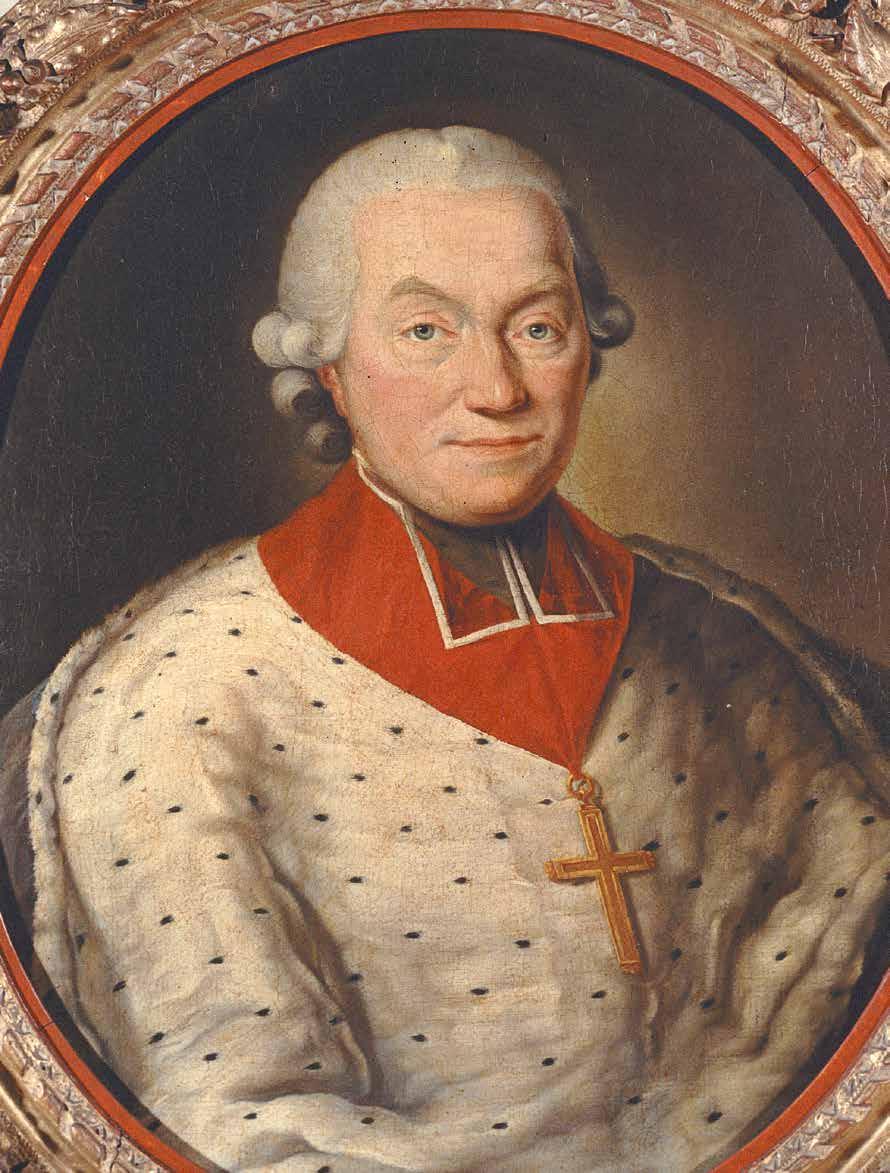
Skin-friendly make-up, a colour palette with a Maastricht feel. A line that makes every make-up lover shine. Give and share the three most beautiful emotions with the unisex eau de parfum range. Passion, nostalgia and intense warm feelings.

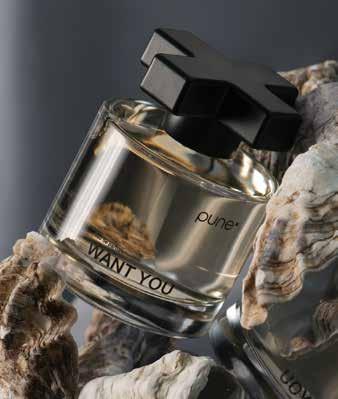


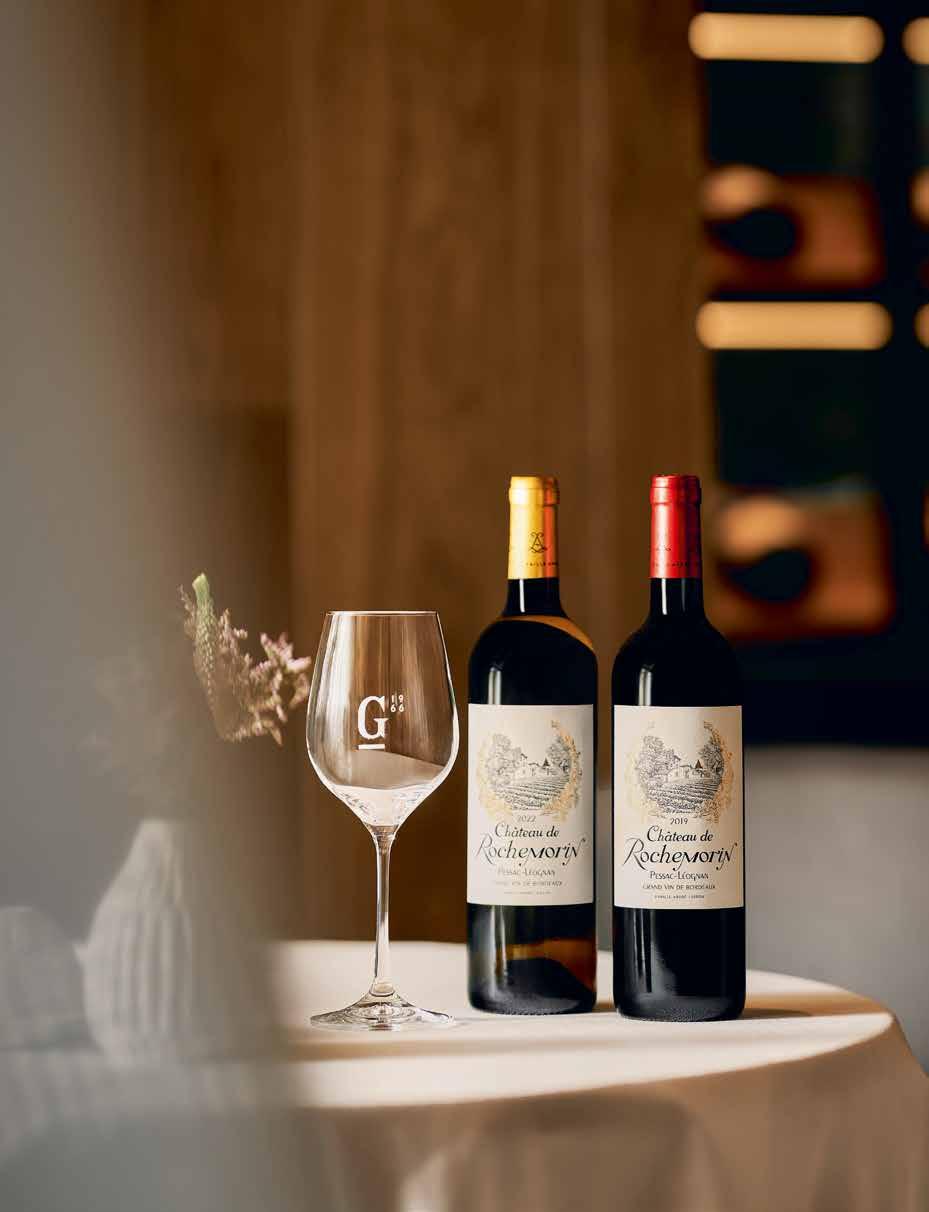
Met onze jarenlange ervaring en diepgaande expertise zijn wij dé wijnimporteur voor professionele wijninkopers in Nederland en België.
In het gastronomisch decor van Van Oys krijgt onze wijnselectie de ruimte om te schitteren. Als partner leveren wij wijnen van gerenommeerde domeinen, met oog voor kwaliteit, terroir en beleving. Samen tillen we de wijnbeleving naar het hoogste niveau.
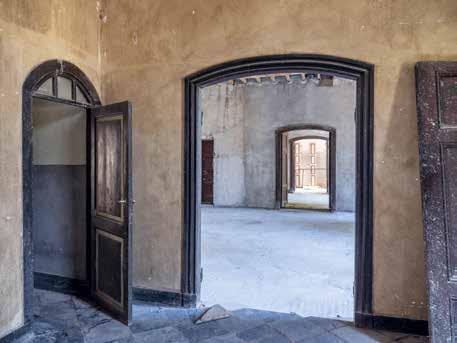
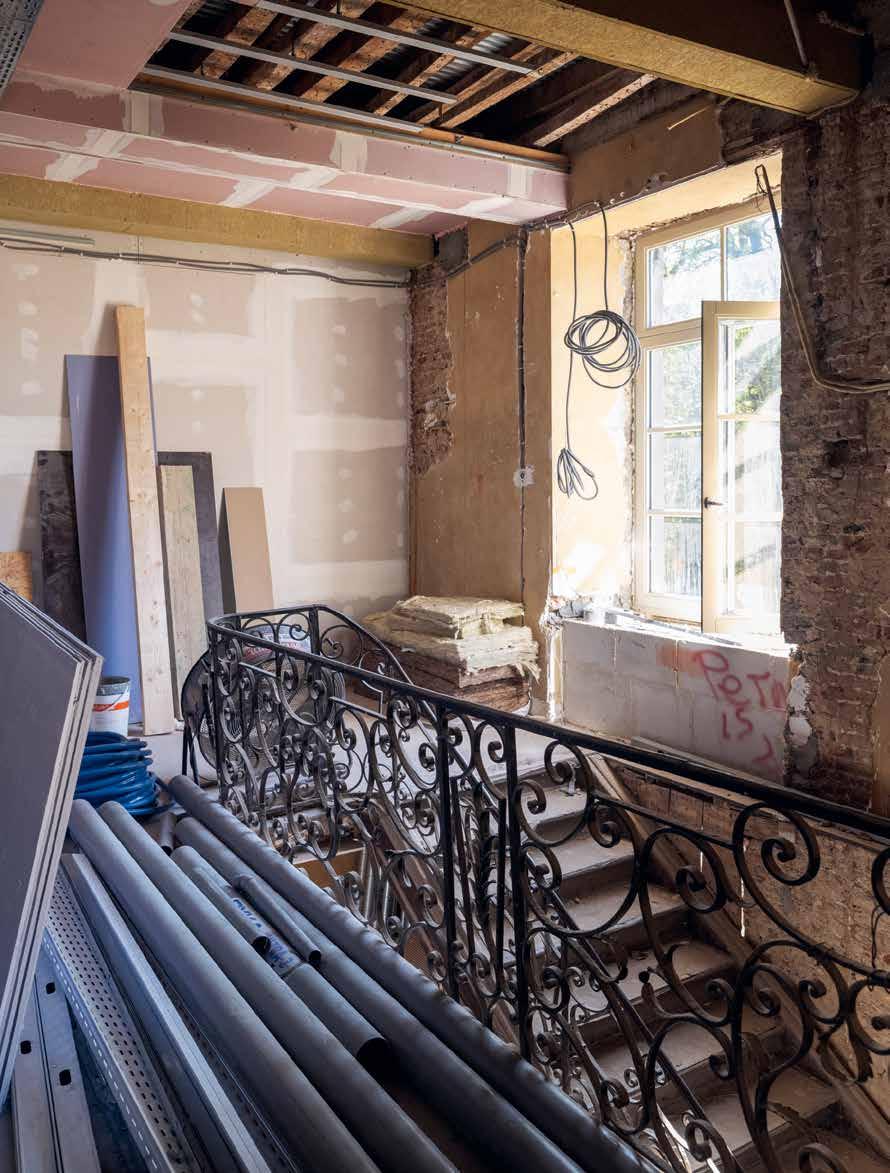
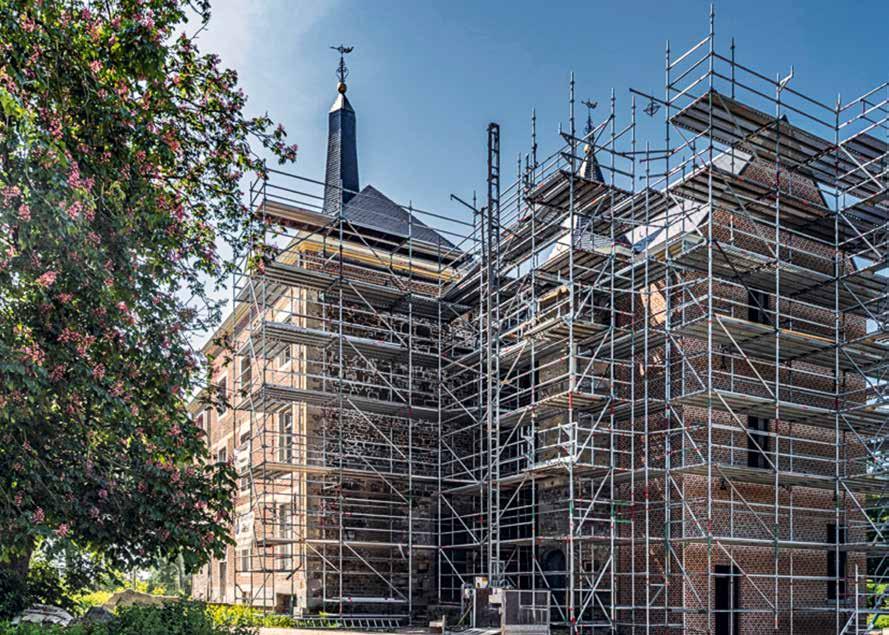
Transforming a rather dilapidated castle and a neglected farmhouse into a dazzling destination for world-class hospitality – in just eighteen months – can only be described as a true tour de force. The construction expertise that brothers Michel and Leon Maes had cultivated over the years proved invaluable throughout the process. Yet even for them, this project demanded a level of improvisation they had never faced before. Never had they taken on something of such scale and prestige. Authenticity became the guiding principle
during preparations for the extensive renovation. The castle, stripped of much of its original character by earlier modifications, was lovingly restored to its former glory.
A gleaming new slate roof now crowns the building, supported by an impressive framework of oak beams – a structure that once again breathes historic soul.
The adjacent farmhouse underwent a striking transformation and extension. It now merges seamlessly with a bold new architectural wing, grounded on a colossal foundation one metre thick.
From the outset, quality was the watchword. Every detail was considered with care – from original materials and natural stone flooring to historic fireplace mantels. Key elements, such as the old stone exterior wall of the farmhouse, were not only preserved but celebrated. Today, that very wall takes pride of place, beautifully illuminated as a defining feature of restaurant Create. In total, hundreds of skilled craftsmen contributed to this ambitious undertaking. The result? Not only has Kasteel Oost been reborn, it now stands as a shining jewel in the Meuse-Rhine Euregion.
‘Quality and nothing but quality –that was the guiding principle from the very beginning.’
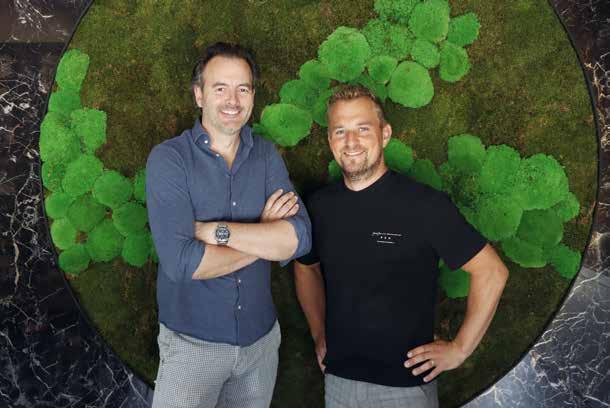
“Ieder interieur begint met uw verhaal.”
Voor elk project de juiste aanpak
Voor particuliere klanten begeleiden wij het volledige traject: van eerste schets tot eindafwerking. We luisteren naar uw wensen en adviseren over indeling, materialen en details. Zodat het eindresultaat perfect past bij uw levensstijl.
Zakelijk interieur op maat
Slangen Interieurbouw is al meer dan 25 jaar een toonaangevende naam in de wereld van interieurontwerp en -realisatie Vanuit onze moderne werkplaats in Maastricht werken wij met een hecht team van 23 vakmensen aan unieke en hoogwaardige interieurprojecten, zowel voor particuliere als zakelijke opdrachtgevers. Door het combineren van ambachtelijk vakmanschap met innovatieve technieken en creatieve oplossingen brengen wij iedere ruimte volledig tot leven
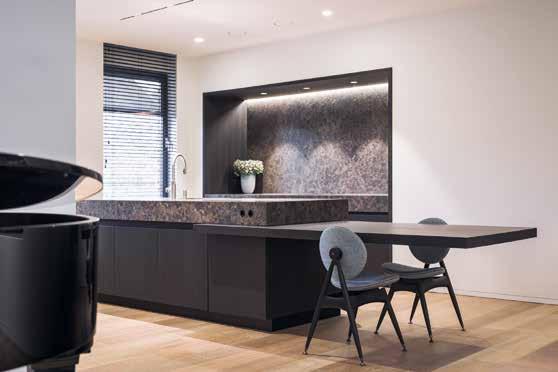
Zakelijke opdrachtgevers, horeca en architecten vinden in ons een betrouwbare partner. Wij denken mee in concept, ontwerpen moodboards en 3D-visualisaties en zorgen voor een efficiënte uitvoering met heldere communicatie.
Persoonlijk, transparant en betrouwbaar
Bij Slangen Interieurbouw staan klantgerichtheid, transparantie en vakmanschap centraal. Wij geloven in open communicatie en persoonlijk contact gedurende het hele traject Uw tevredenheid is ons belangrijkste doel

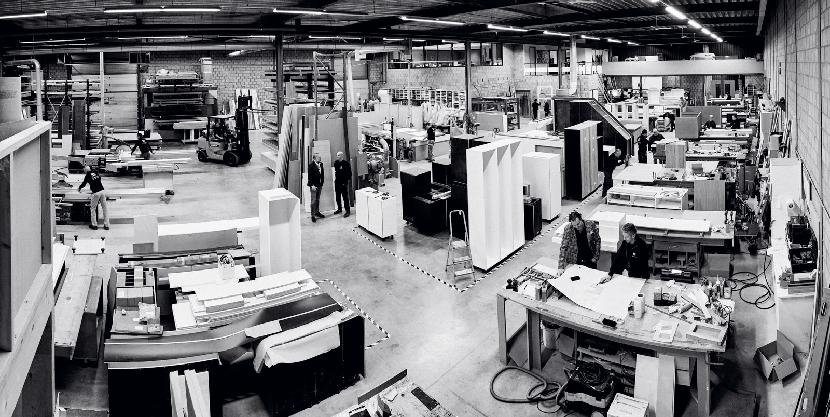
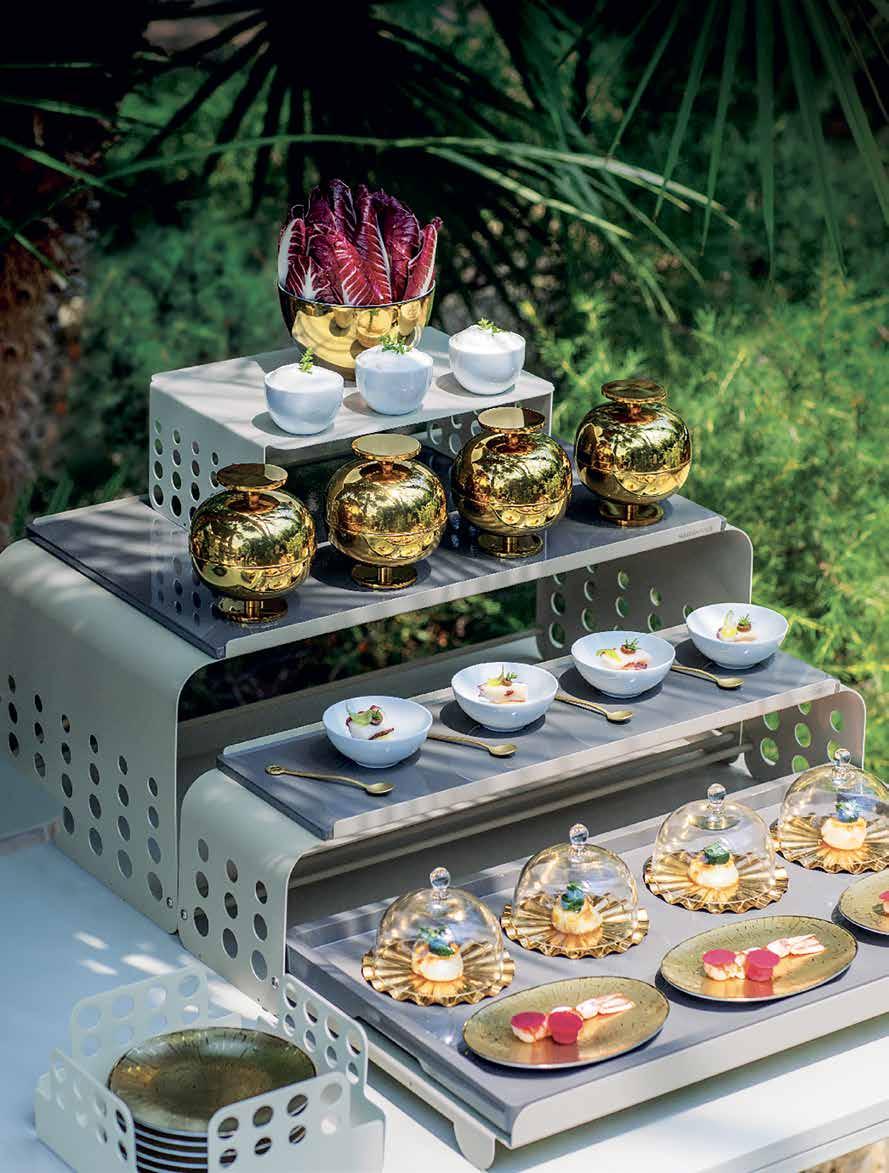
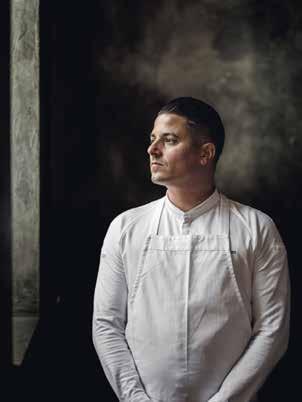
by Guido Braeken
Even before the official opening, the gastronomic restaurant at Van Oys Maastricht Retreat was already the talk of the town. This buzz was largely thanks to the timely decision to appoint renowned chef GUIDO BRAEKEN as head of the kitchen. He had already proven his talent and earned his reputation at other prestigious venues.
When you dine at Restaurant Create, it’s not just a meal, it’s a gastronomic enchantment that stays with you long after the last bite. The credit goes to the bold, distinctive flavours crafted by Braeken and his team. Each dish is a masterpiece, finished with meticulous attention to the finest details. Take, for example, the North Sea crab paired with Kagoshima wagyu and Irish oyster, or the turbot with fermented white asparagus and caviar, each a true work of art. You’ll discover a surprising interplay of flavours that come together in a complete, thrilling harmony.
Guido Braeken’s cuisine is richly layered, yet never heavy. Ingredients are sourced worldwide, selected solely for their exceptional quality.
The setting itself is worth the journey. The kitchen and aperitif space are housed in the former farmhouse, where as many original materials as possible have been preserved. The dining room is a serene oasis, with authentic natural materials everywhere. One striking feature is the massive tree trunk fixed to the ceiling, which perfectly complements the beautiful wooden floor and the farmhouse’s original stone exterior wall. The round tables and curved seating create an intimate atmosphere, carefully arranged to highlight these elemental features while ensuring privacy. The entire space feels warm and inviting, especially with breathtaking views of nature through the large windows. Guests can also choose to watch the intense work unfold in the semi-open kitchen, all while receiving attentive service.
The spotlight has been firmly on Guido Braeken since he earned two Michelin stars at the former Julemont restaurant in Château Wittem, about 20 kilometres from Maastricht. He’s not much of a talker, preferring to focus on what happens at the cutting boards and in the pans, but when it comes to his craft, his passion shines through.
Does the weight of expectation affect you?
‘The Maes brothers never told me to chase Michelin stars as quickly as possible. That’s not how it works. They know what I’m capable of and trust I’ll give my all to perform at the highest level. But you have
to give yourself and your team time. It can’t become a barrier, because in many ways you’re starting from scratch. We’re over one hundred percent motivated to give it everything we’ve got, and then we’ll see what Michelin thinks.’
Interestingly, Guido didn’t always envision himself as a chef: ‘No, it didn’t interest me at first. I started with a part-time job washing dishes at De Poshoorn in Maastricht. It was a cosy café where you could eat, but definitely not fine dining. That didn’t matter – I loved the team spirit. That camaraderie really appealed to me. At some point, I even got to make a satay skewer. It wasn’t much, but I enjoyed it. That’s when I started thinking about hospitality as a career. Even now, that sense of working as a team is everything. You go through fire for each other. Of course there’s hierarchy, but what matters most is unity.’
How did you assemble your new team? ‘My chef Max van der Sterren joined me early on. He’s been by my side before, and we understand each other. I was fortunate that other talented people also showed interest. You can never do this alone.’
Earning those two stars in 2022 has certainly elevated your status, it must have changed your life in some way, right? ‘Absolutely. I still remember sitting in that room in Amsterdam. One star would have been amazing, but two at once, I was overwhelmed! Watching those moments again still gives me goosebumps. Afterward, you notice how much more international attention you get, not just from guests but also from colleagues. You’re invited to cooking sessions and events all over the world. I met Eric Kragh Vildgaard from restaurant Jordnær. I went to dine at his place in Copenhagen, and we became friends. I’m deeply impressed by his cooking style and approach. Every detail in his kitchen and interior design is connected to nature. It’s truly special.’
Do you now have full freedom to develop your own concept? ‘This is the first time I’ve had the opportunity to design a restaurant from the ground up together with my right hand, Max van der Sterren, and of course the management. It has been quite a journey. At Beluga Loves You, I was head
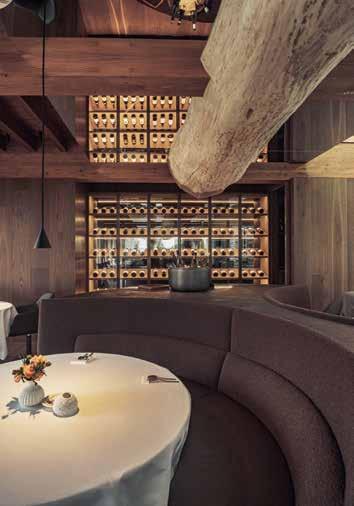
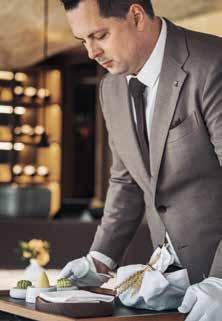
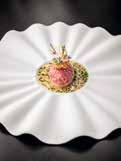
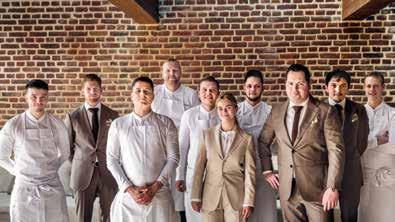
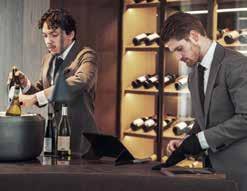
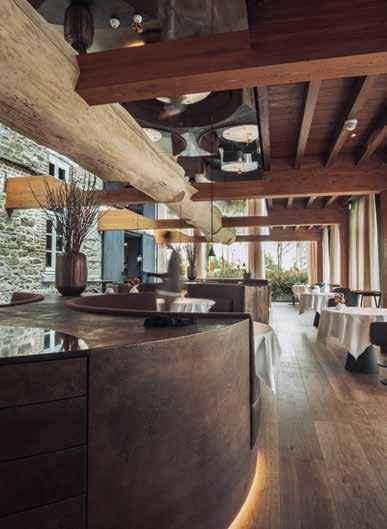
‘People ask me if my cuisine is more French or Asian. I honestly don’t know. I see it as a worldly kitchen, with influences from everywhere.’
chef for the first time, and that’s when we earned our star. At Julemont in Wittem, I had full freedom to design the menu, and thanks to the corona period, we had the chance to focus on that for a while. But of course, I couldn’t design the kitchen itself, because it was already there. Now, I get to start completely from scratch, from the drawing board and that’s probably a oncein-a-lifetime opportunity.’
Why was the choice made to locate the restaurant in the farmhouse rather than the castle? ‘Logistically it made sense. My colleague Pascal Jalhay runs Restaurant MAES, located in the Château’s conservatory, which also houses the breakfast area. In our restaurant, you enter through the former farmhouse gate and immediately step into a beautiful aperitif area. From there, you turn left to the dining room, and as you pass by, you catch a glimpse of the open kitchen where we’re busy at work. Even once you’re seated, you can still partially see the kitchen team in action, although we have a sliding wall so we can work more discreetly if needed. I don’t mind guests seeing me and my team at work, but we have to remember that the afternoon or evening is all about the guests, not us. I’m not the type to seek the spotlight, although I have learned over time that if needed, I can share the story behind a dish. My colleagues and I feel very comfortable in this environment. We were able to perfectly tailor both the cold and hot kitchens to our needs during the design process, working closely with
supplier Gorissen. That makes for a very pleasant working atmosphere.’
How would you describe the atmosphere? ‘As a guest, you’re seated in the conservatory area, directly connected to the beautiful nature outside through the large windows. To emphasise this, a large, long tree trunk is mounted on the ceiling – it’s quite striking. I also really like that the entire interior is decorated in natural tones. It creates a warm yet contemporary feel. There’s seating for about 30 covers, which is just the right size.’
And what do you bring to the plate? ‘I’ve been able to develop my own style, and that takes time. It’s something I’ve worked on for years, and it really came to life during my time in Wittem. I was able to truly express myself in the kitchen there, and I’m very grateful to the owners for that. We aim for the absolute top. I can’t say if I cook more French or Asian cuisine, for example I see it as a worldly kitchen with a variety of influences. I recently visited Japan. The variety of products you see at the markets there is incredible. Thanks to all these experiences, my dishes will develop even deeper flavours. It will also be interesting because soon we’ll be able
to use our own vegetables and herbs. Across the entire estate, we’ll work with a green, sustainable mindset, which offers extra opportunities. Ultimately, I want to apply those products according to my own imagination. I am who I am, I can’t do otherwise.’
You also consciously offer à la carte options, besides the menus? ‘I believe guests should have that choice, with the option of a three-course lunch if they wish. On weekdays, guests can choose a five-course dinner as well as the seven-course menu. We run eight services per week, from Wednesday through Saturday, both lunch and dinner.’
You’ll still be dining with colleagues nearby and farther afield from time to time, right? What can they serve to make you happy? ‘Of course, beautifully crafted and creative dishes. I also really enjoy catching up with colleagues – I truly wish them all the best. Personally, I especially look forward to seafood and fish dishes; they’re just that bit more challenging. And a fine glass of Champagne? That will always make me happy. Simply delicious.’
Guido Braeken (40) began his career at De Dillegaard in Nuth, then spent five years at restaurant De Leuf in Ubachsberg during the time of the late Paul van de Bunt (**), followed by seven years with Ralf Berendsen (**) at La Butte aux Bois in Lanaken, one and a half years at Beluga Loves You (*) in Maastricht with Servais Tielman, and three and a half years at Julemont in Château Wittem. With his departure, the two Michelin stars he had earned there disappeared.
Text
Jo Cortenraedt
Photography
Guy Houben and Rowena Rutten
The strong emphasis on gastronomy at Van Oys Maastricht Retreat is evident in the appointment of several seasoned professionals who have more than earned their stripes. At the fine-dining restaurant Create, it’s Guido Braeken and his team who take the lead, while at restaurant Maes, the responsibility lies with PASCAL JALHAY and his crew. But that's not all, Jalhay also serves as culinary director for the entire estate. A significant responsibility for a highly acclaimed chef.
It’s been more than twenty years since Pascal Jalhay, as the youngest chef in the Netherlands, earned two Michelin stars in less than two years at Restaurant Vermeer in Amsterdam. He was the first to combine French cuisine with Asian influences. Nowadays, that combination is quite common, but at the time, it was a bold move. There was already speculation about his chances of earning a third star, as everyone, including Michelin agreed that a top talent had emerged. But the Maastricht-born chef, with a Brabant mother and an Indonesian father, surprised many by choosing a
different path. He took a leadership role at a major international company that provides catering for large airlines, such as Garuda and Korean Air. And although it involved a great deal of travel, he felt it offered a better balance with a stable private life.
AVIATION
‘At a certain point, I realised that while I was fully focused on the kitchen at Vermeer, I wasn’t seeing my children grow up. That’s when I changed course.’
Pascal Jalhay has no regrets. ‘It was a truly fascinating time. I was responsible for
developing the tens of thousands of meals a day that were literally flying through the air. The real challenge was navigating the differences between cultures. Europeans have different tastes than Asians or South Americans, for example. During those years, I gained a lot of experience by going on location to explore the origins of regional cuisines and uncover the stories behind traditional dishes. That journey opened up a whole new world for me. Since then, I understand why food and cooking hold such an important place in our lives. And why, for example, expats returning to their place of
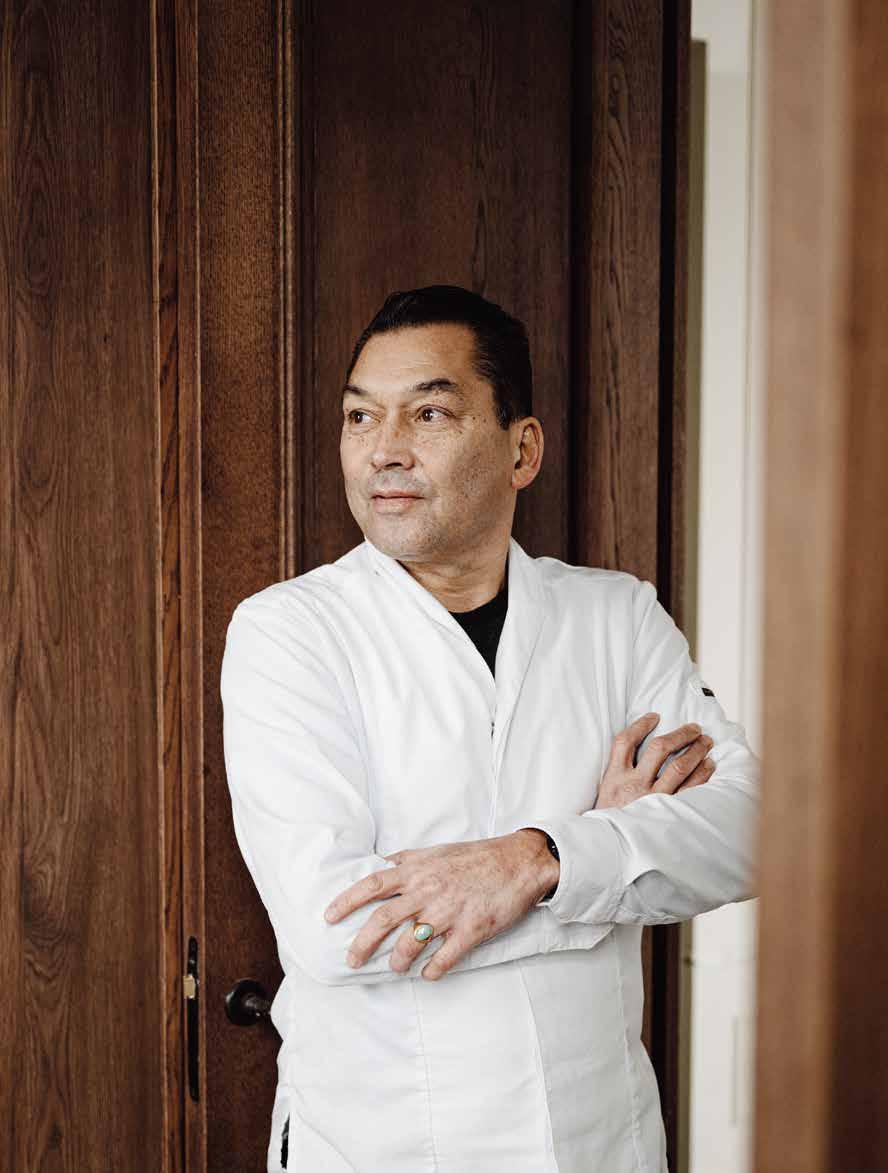
birth often crave what are, on the surface, simple childhood favourites. These dishes carry emotional weight, they connect us to our roots, our families and the memories that shaped us. It’s not just about taste; it’s about identity and belonging. That understanding continues to influence how I cook and how I approach every culinary experience.’
Jalhay had the opportunity early in his career to learn the finer points of the trade from renowned chefs. ‘I look back with great gratitude on the wise advice of Robert Kranenborg at the Amstel Hotel in Amsterdam, but also closer to home on my mentor Hans Snijders at Château Neercanne and Roger Souvereyns at Scholteshof near Hasselt.
The latter was already experimenting in the 1980s with vegetables and herbs from his own garden, far ahead of his time. He deserves credit for steering traditional haute cuisine in a new direction and for training a generation of young chefs to a higher level. He inspired me to introduce Indonesian influences into my cooking. At the time, that was a step into the unknown, but it led me to earn two Michelin stars at restaurant Vermeer in the Barbizon Palace in Amsterdam.’
Jalhay’s globetrotting period has now come to an end. Three years ago, he settled in Murcia, Spain, where he bought a finca.
‘I regularly host guests at my chef’s table there, preferably outside, cooking over open fire, working with local ingredients. It was incredibly fulfilling. I also advise the kitchen of a nearby luxury golf resort. But to be honest, I started feeling the itch to fully immerse myself in a restaurant project again. I had missed it over the years.
At this stage in my life – I'm 55 – this is the right time. I want to give it everything for a few more years. The role at Van Oys fits
perfectly with my ambitions. I’m keeping the finca in Spain for holidays, but now, for the first time, I’m really working in the Maastricht region. I am excited for what is ahead.’
Pascal Jalhay is a disciplined man – currently preparing for his next marathon. But he’s also someone who leads with his heart.
‘My connection with Marc Alofs, who manages Van Oys on the business side, was close from the start. And the enthusiasm of the owners, Michel and Leon Maes, is infectious. Their vision for Cittaslow, with an emphasis on using as many regional products as possible, really resonates with me. Sustainability is becoming increasingly important for the preservation of nature and it will absolutely guide me in shaping the culinary offerings here.’
As culinary director or executive chef he won’t be showing up to work in a threepiece suit. ‘No, I’ll be wearing my apron, and if needed, I’ll be right there at the stove. I carry the overall responsibility for the entire gastronomic domain, but my focus will primarily be on the restaurant in the château. In addition, I’ll oversee overall procurement and special events.
We’ve already had the opportunity to host several large dinners and receptions in the available spaces and each of those has to be top tier, just like the Sunday brunch, for instance.’
Initially, there were plans to run the Château’s restaurant as a brasserie, but that idea was shelved.
‘We use a very different style to Create because they shouldn’t compete with each other. What’s important is that we primarily use products from our own terroir, but always of the highest quality. With these, we
create beautifully presented dishes that are above all very delicious. Flavour – that’s what it’s all about. Compared to Create, things are more basic here, both the plates and the tableware, but chosen with the same care.’
The term terroir doesn’t stop Jalhay from working with the finest products, but here it’s not necessary to serve the largest langoustines. ‘For example, we take the ungraded smaller sizes and turn them into a delicious carpaccio with vegetables and herbs from the region.’
Another example is his slow-cooked pork belly, glazed with homemade hoisin sauce – a nod to Peking duck, but repurposed here to make the meat melt on the tongue.
The chef still loves real hands-on work.
‘You notice that younger chefs no longer know how to make a proper rouille for fish soup. I love passing on that knowledge. Real craftsmanship deserves to be preserved – and that’s what we want to offer here. We want to stand out. We want to surprise our guests.’
Speaking of fish, Jalhay was invited to join the North Sea Chefs, who source only fish from the North Sea – not from the other side of the world. Cooking according to the seasons is a given at restaurant Maes.
‘That’s actually not obvious. Nature doesn’t patiently wait for summer, winter, spring or autumn – it evolves throughout the year. We listen to what nature offers us each week.’
Because of the hotel function, this restaurant is open every day for lunch and dinner.
‘We work with a six-course menu, from which you can choose starting at four courses. Lunch can also be two or three courses. Besides the regular seating, on Fridays and Saturdays we also offer table d’hôte. We then prepare beautiful regional dishes at a high level, which guests can enjoy together. That fits perfectly with the informal atmosphere of restaurant Maes.’
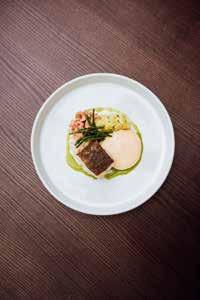
‘The circle is complete;
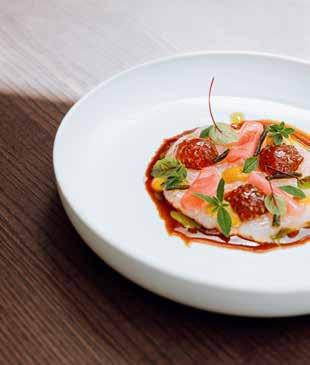
I’m coming back home.’
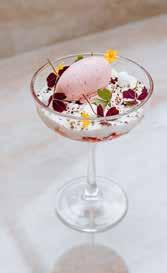
45






























































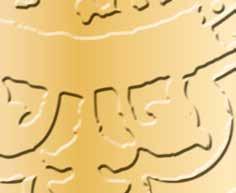













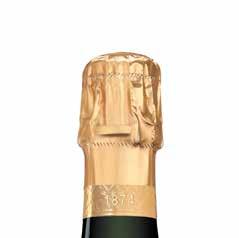


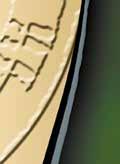





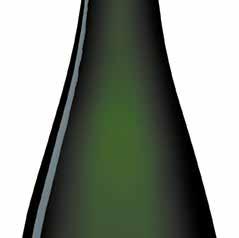
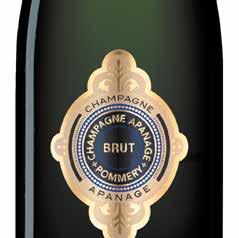








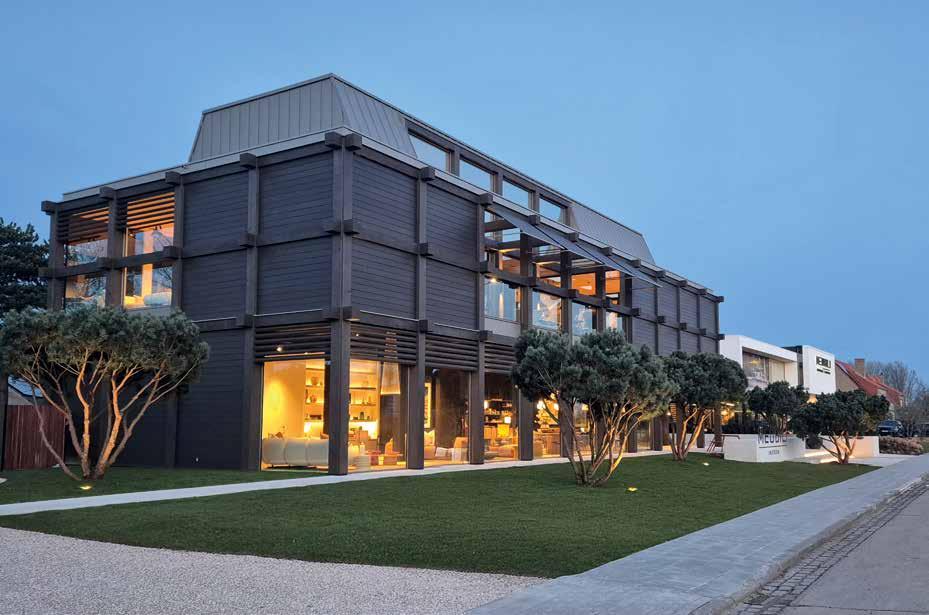
Meubili, the leading name in outdoor furniture, is now introducing an INDOOR collection and opening a new showroom in Knokke — making it your one-stop shop for both indoor and outdoor furnishings. Discover an exclusive selection of elegant dining sets, comfortable lounge areas and refined decorative pieces. Experience modern design, premium materials and timeless elegance in an inspiring setting. The perfect place to give your interior a warm and stylish touch. Visit the new showroom today and let yourself be inspired!

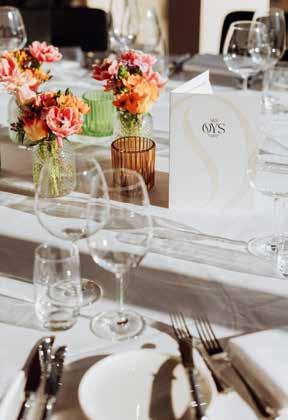
An Unforgettable Afternoon of Indulgence at Van Oys Maastricht Retreat
Every Sunday, the exclusive Grand Sunday Brunch transforms your afternoon into a truly exceptional gastronomic experience. Hosted in one of our elegant and inviting spaces, this culinary celebration brings together refined cuisine, exquisite wines and both sweet and savoury delights – all served with impeccable service in a relaxed atmosphere. It’s the perfect way to round off your week in style. At the heart of the Grand Sunday Brunch are seasonal dishes crafted by Culinary Director Pascal Jalhay, a renowned chef known for blending his French training and years in Spain with the finest regional ingredients. Expect the very best of each season, combined with the unique flavours of Limburg’s terroir.
What’s included:
• A Champagne aperitif
• Lavish five-course brunch buffet, featuring: seasonal specialities, decadent sweet treats, a selection of regional cheeses
• Wine pairing and mineral waters
• Coffee and tea to conclude €125 per person
On select Sundays, the Grand Sunday Brunch is elevated with stylish entertainment and seasonal ingredients –creating an even more festive and memorable experience.
The Autumn Edition: 19 October 2025
The Saint Nicholas Edition: 23 November 2025
The most magical time of the year, on the enchanting estate of Van Oys Celebrate the festive season in a setting where elegance, warmth and wonder come together. From twinkling lights to unforgettable flavours and refined comfort, the holidays at Van Oys promise a truly special experience.
Christmas at Van Oys: 24 to 26 December 2025
Sylvester Celebration: 30 December 2025 to 1 January 2026
An unforgettable overnight stay at Van Oys Maastricht Retreat. Let the rich flavours of the land guide your senses during a truly memorable escape. A Taste of Terroir invites you to experience the culinary craftsmanship of Restaurant Maes, Cuisine du Terroir, through a refined five-course dinner curated by Culinary Director Pascal Jalhay.
What’s included?
Rooted in authenticity and inspired by the seasons, each dish tells the story of the region’s natural abundance. Paired with a peaceful night in one of our luxury rooms or suites – and enhanced by the signature Van Oys service – this experience offers a perfect balance of comfort, flavour and heartfelt hospitality.
• One overnight stay in one of our luxury rooms or suites
• Five-course dinner (excluding drinks) at Maes, Cuisine du Terroir by Pascal Jalhay
• Sparkling welcome and amuse-bouche on arrival
• The Early Bird Breakfast Experience
• Daily arrival possible
From €274 per person, based on two people per room (excluding service charge)
Included services:
A warm welcome / Turndown service / High-speed Wi-Fi / Regional and international newspapers / In-room coffee and tea facilities / Fresh regional fruit in the room / Bottled spring water / Bathrobe and slippers / Luxury bathroom amenities / Complimentary parking / Spa & Gym (from Autumn 2025): Access to the spa from 7am to 10pm during your stay, 24/7 access to the gym / Family services: Children’s amenities / Babysitting available on request (additional charge)
Keep
an eye on VANOYS.COM to discover the exclusive EVENTS regularly hosted at Van Oys. From GASTRONOMY to culture, ranging from intimate four-hands dinners to unforgettable family brunches –each occasion is crafted to delight
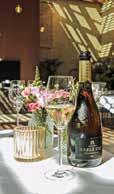
Discover a world of extraordinary taste, where every dish is a narrative, each ingredient a brushstroke, and every moment an immersive experience. Surrounded by the refined elegance of Van Oys Maastricht Retreat, you are invited on a sensory journey that redefines luxury dining.
What’s included?
• One overnight stay in one of our luxury rooms or suites
• Sparkling welcome and amuse-bouche on arrival
• Exclusive in-room surprise curated by Guido Braeken
• Five-course dinner (excluding drinks) at Create by Guido Braeken
• The Early Bird Breakfast Experience
• Arrival: Wednesday or Thursday From €299 per person, based on two guests per room (excluding service charge)
Included services:
A warm welcome / Turndown service / High-speed Wi-Fi / Regional and international newspapers / In-room coffee and tea facilities / Fresh regional fruit in the room / Bottled spring water / Bathrobe and slippers / Luxury bathroom amenities / Complimentary parking / Spa & Gym (from Autumn 2025): Access to the spa from 7am to 10pm during your stay, 24/7 access to the gym / Family services: Children’s amenities / Babysitting available on request (additional charge)
A seven-course symphony by Guido Braeken Savour the pinnacle of culinary artistry with The Ultimate of Create – a seven-course experience that transcends the boundaries of fine dining. Crafted for true connoisseurs, each plate reveals a new dimension of imagination, precision and taste.
What’s included?
Composed with daring elegance and served in the serene refinement of Van Oys Maastricht Retreat, this exclusive evening invites you to surrender to the full spectrum of creative gastronomy at its most exquisite.
• One overnight stay in one of our luxury rooms or suites
• Sparkling welcome and amuse-bouche on arrival
• Exclusive in-room surprise curated by Guido Braeken
• Seven-course dinner (excluding drinks) at Create by Guido Braeken
• The Early Bird Breakfast Experience
• Arrival: Wednesday to Saturday From €359 per person, based on two guests per room (excluding service charge)
Included services:
A warm welcome / Turndown service / High-speed Wi-Fi / Regional and international newspapers / In-room coffee and tea facilities / Fresh regional fruit in the room / Bottled spring water / Bathrobe and slippers / Luxury bathroom amenities / Complimentary parking / Spa & Gym (from Autumn 2025): Access to the spa from 7am to 10pm during your stay, 24/7 access to the gym / Family services: Children’s amenities / Babysitting available on request (additional charge)
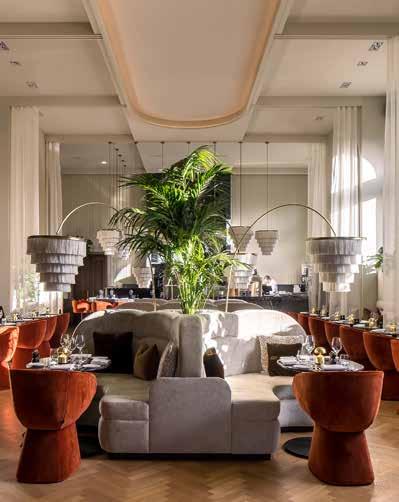
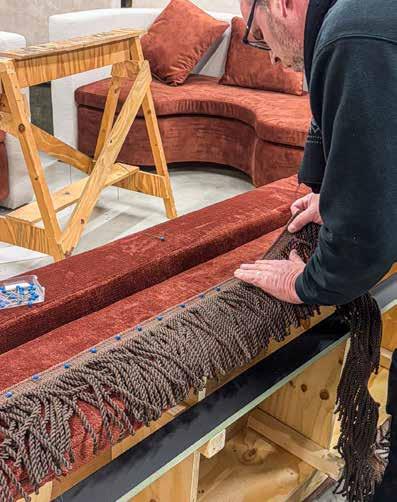
| maatwerk | stoffen | tapijten | gordijnen
Het was een bijzondere eer om als partner voor het los meubilair en de maatwerk zitbanken aan dit prachtige project te hebben mogen meewerken. Een hele uitdaging ook door de vele verschillende ruimtes met elk hun eigen accenten, vereisten en invulling. Van de lobby over de restaurants, de ontbijtruimte, bar en private dining tot in de kamers van het kasteel die stuk voor stuk mini-projecten waren waar elk detail op zich telt en het verhaal in zijn geheel perfect moet kloppen.
Dank aan onze partners, het team en vooral de architecten en opdrachtgevers voor het vertrouwen. Wij wensen jullie alle succes met dit unieke project!
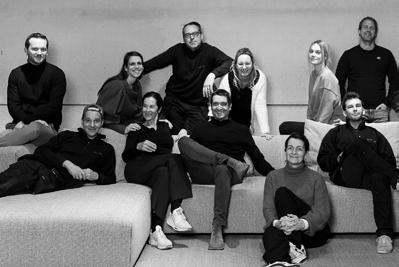
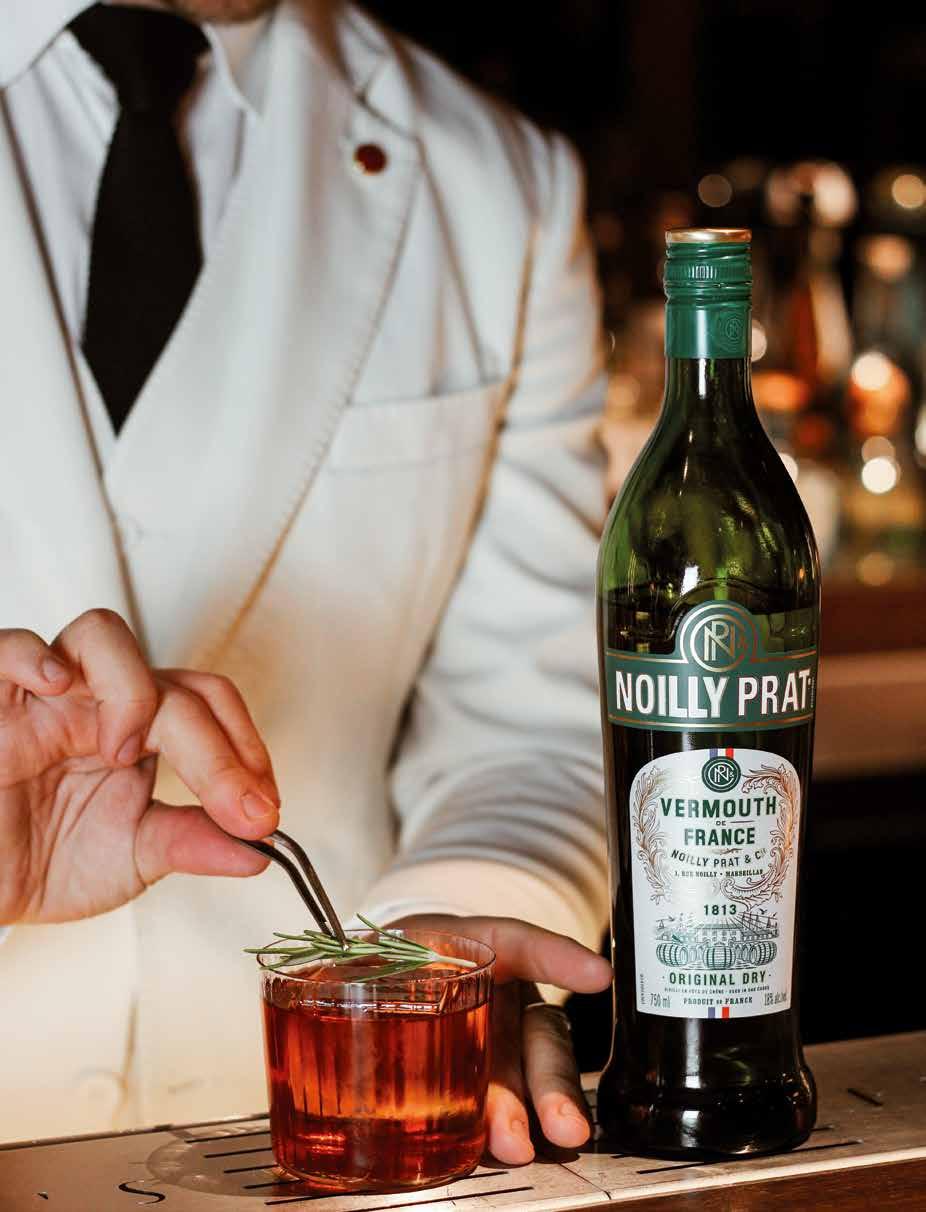

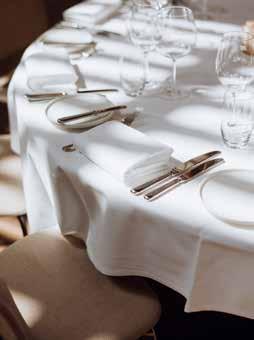
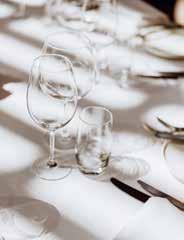
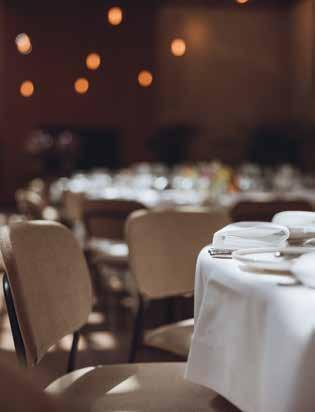
Text
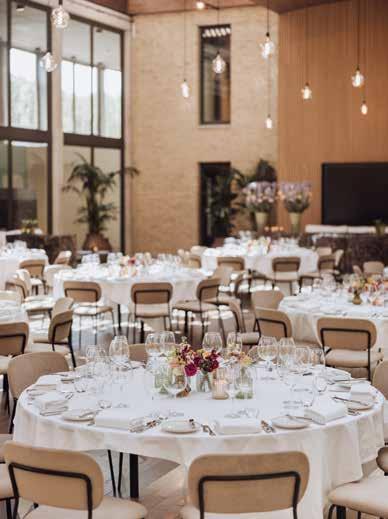
Michel and Leon Maes have made a conscious decision to root Van Oys Maastricht Retreat deeply in its surroundings — not only through architecture and culinary philosophy, but also by naming its suites and event spaces after significant local figures, communities and associations. In and around EIJSDEN-MARGRATEN, there is no shortage of inspiring names to choose from.
The Sainte Cécile hall is named after Saint Cecilia, a young noble Roman woman who lived during Emperor Alexander Severus’s reign. From an early age, she devoted her life to prayer and charity and took a vow of chastity. When her parents arranged her marriage to Valerian, a young pagan, she prayed to remain pure and revealed to him that her lover was an angel of God watching over her.
Valerian, who loved Cecilia, agreed to convert and be baptised if he could see this angel. After his baptism, the angel appeared to him, inspiring him and his brother to convert and help bury Christian martyrs. Both brothers were later betrayed and executed.
Despite this, Cecilia continued her missionary work, was betrayed herself, and sentenced to death. Although the executioner struck her three times, she miraculously survived. She then distributed her possessions to the poor and asked Bishop Urban to dedicate a church on the site of her beheading. The church of Santa Cecilia in Trastevere, Rome, still stands today.
The story of Saint Cecilia has lasted for centuries because she is the patron saint of musicians and musical instrument makers. According to legend, on her way to martyrdom, she heard the music of God playing. This is why she is often depicted wearing a crown of flowers, symbolising her purity and holding a musical instrument. She has been a source of inspiration for many visual artists, musicians, and composers. One of the most famous artworks is the marble statue by Stefano Maderno, discovered during the restoration of the Church of Santa Cecilia in the Roman district of Trastevere. Even more famous is the Hymn to St Cecilia by world-renowned composer Benjamin Britten, who was born on November 22, 1913, Saint Cecilia’s feast day.
In the case of Van Oys Maastricht Retreat, the Sainte Cécile hall refers to the Royal Harmony Sainte Cécile from Eijsden (De Roej), founded in 1880 by René Graaf de Geloes of Castle Eijsden. Sainte Cécile consists of a harmony orchestra and a drum and bugle corps. Both ensembles have
international recognition and, under the direction of Jan Cober, have won numerous prestigious competitions. Sainte Cécile also includes two successful youth orchestras: Les Jeunes and Les Petits Jeunes.
Back to business. The Sainte Cécile hall, located in the Carré, is 390sqm in size and can be divided into two sections (240 and 150sqm) for seated dinners of up to 280 guests. It is ideal for weddings, corporate events and product presentations of all sizes from jewellery to cars. The hall was designed by Verbraeken x Biset and is equipped with the latest audiovisual technology. The interior feels warm and cosy thanks to the use of the finest materials. Great attention has also been given to the acoustics, making Sainte Cécile the perfect venue for festive events, concerts, academic sessions, and conferences. The floral arrangements and other decorations carry the signature of Frank Bruninx, our in-house master florist. All this explains why the media praise Sainte Cécile as the most beautiful hall in the Netherlands.

Even though Van Oys Maastricht Retreat is located just a few kilometres outside the city limits, the city of Maastricht serves as the international showcase. Not without reason, as Maastricht is renowned worldwide thanks to its Roman history, historic city centre, international events such as the TEFAF art and antiques fair and André Rieu’s concerts, as well as the famous Maastricht Treaty. It is the capital of Dutch Limburg and known across the globe.
Text Frank Hovens
Maastricht is known as the oldest city in the Netherlands and originated at the spot where the important Roman road from Cologne to the Strait of Calais (now known as the Via Belgica) crossed the Meuse River: Mosa Trajectum. Close to this location, the small river Jeker flows into the Meuse. Uniquely, Maastricht developed on both banks of a river.
In the fourth century, Saint Servatius (420), as bishop of Tongeren-Maastricht, was the first bishop of what is now Belgium and the Netherlands. The place where he was buried grew into the Saint Servatius Basilica located on the Vrijthof square. Later, the bishopric seat was moved to Liège. In the Middle Ages, Liège, Maastricht and Aachen (the capital of Charlemagne, crowned emperor in 800) were important European cities.
Maastricht’s cultural significance in the Middle Ages is embodied by the troubadour Hendrik van Veldeke (1195). At the time when Western European literature was born, he served as a link between French poetry on the one hand and Dutch and German on the
other. Among other things, he sang about Maastricht as a trading city. Maastricht’s cloth (textiles) was renowned throughout Europe. Around 1500, the city experienced a flourishing artistic period. The sculptor Jan van Steffeswert is the best-known artist from that time, partly because he signed his works.
Maastricht had a dual authority: alongside the German emperor and later the German king, the Prince-Bishop of Liège also exercised power there. The authority of the German king was later effectively exercised by the Duke of Brabant in Brussels. While the Saint Servatius Basilica was the most important church in the city for the German ruler, the Church of Our Lady (Onze-Lieve-Vrouwekerk) held that status for the Prince-Bishop. The city attracted many pilgrims. In 1275, the wooden Roman bridge collapsed during a procession. About a hundred metres north, the famous stone Saint Servatius Bridge (the Aw Brögk) was built. After 1200, Maastricht became a fortress city: the city was walled and besieged
several times. At the start of the Eighty Years’ War (1568–1648), fuelled by a Protestant revolt, Maastricht was plundered by Spanish troops. This marked the end of Maastricht as a city of European significance. In 1632, the city was captured by Frederick Henry, the youngest son of William of Orange, on behalf of the (Dutch) Republic. The Republic took over the rights of the Duke of Brabant. From then on, the city was both Catholic and Protestant; political power was divided between the Republic and the Prince-Bishop. Alongside many Catholic churches and monasteries, Protestant churches appeared. For example, Saint John’s Church (Sint-Jan) was converted from a Catholic parish church into a church for the Reformed congregation. The city’s defences were strengthened with fortifications. The largest expansion took place under the direction of master builder Vauban, when Maastricht was under French control for five years after a siege by King Louis XIV in 1673. During that siege, D’Artagnan, the leader of the Three Musketeers immortalised by Alexandre Dumas was killed.
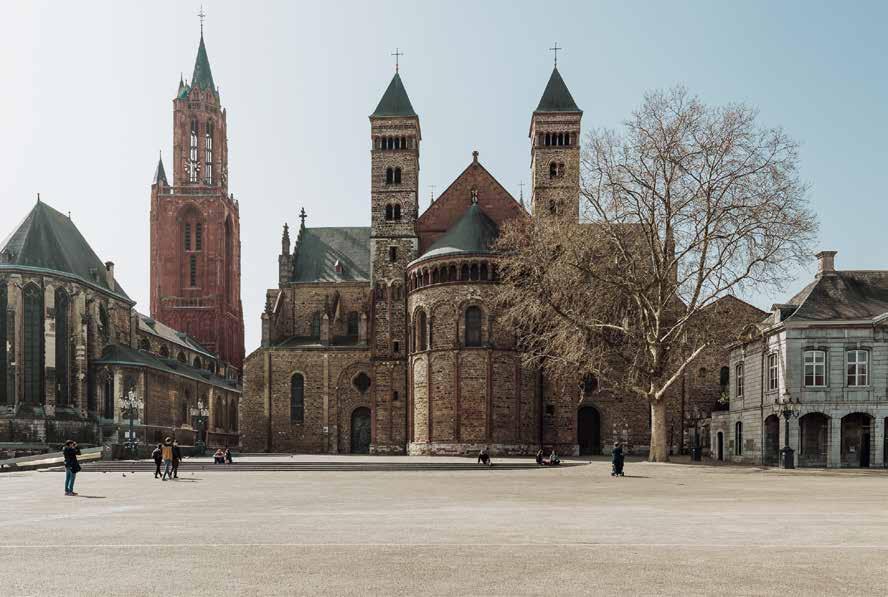
In 1794, Maastricht (along with the entire current province of Limburg) was once again conquered by the French – this time not by a king, but by the army of the French Republic (which arose after the French Revolution of 1789). During this period, the skull of the Mosasaurus from Sint-Pietersberg was taken to Paris. Maastricht became the capital of the department Meuse-Inférieure (Lower Meuse). After the French left, in 1815 the province of Limburg was formed from the Lower Meuse as part of the United Kingdom of the Netherlands. In 1830, the Belgian Revolution broke out. Limburg sided with Belgium, but Maastricht remained a ‘Dutch’ enclave. In 1839, the Belgian separation was finalised, dividing Limburg into Belgian and Dutch provinces with the same name.
During the years of the Belgian Revolution, industrialist Petrus Regout succeeded in establishing a series of factories, such as a pottery and a glass factory. Following his example, other entrepreneurs, including the founders of the Royal Dutch Paper Factory (Koninklijke Nederlandse Papierfabriek,
KNP), set up operations. Maastricht became the first industrial city in the Netherlands. The city benefited from the Zuid-Willemsvaart canal built in 1826, the Liège-Maastricht canal opened in 1850 (which was filled in over a hundred years later), and the Julianakanaal opened in 1935.
In 1867, Maastricht’s fortress status was abolished. Large parts of the city walls and surrounding fortifications were demolished, but unlike other Dutch cities, a significant portion of the fortifications has been preserved.
In the twentieth century, Maastricht was for a long time a beautiful but somewhat inwardlooking city. Industry, including the Eerste Nederlandse Cement Industrie (ENCI), flourished, but more dynamism was found outside the city than within it. Heerlen, as the centre of the South Limburg mining industry, was much more modern than Maastricht.
The arrival of the university in 1976 marked Maastricht’s transition into an open city.
Maastricht’s profile as a European city was crowned with a summit of European heads of government in 1991, where the Maastricht Treaty was prepared. A few months later, it was signed, marking the birth of the common European currency. To facilitate the free movement of capital, goods and people, the euro was launched as the means of payment in most of the participating countries. Many feared that all these changes would cause the unique Maastricht spirit (Mestreechter Geis) to disappear. While it is indeed no longer what it was fifty years ago, Maastricht remains a vibrant city with its own spirit and many influences from Belgium and Germany. Visitors from across the country see Maastricht as a little piece of foreign soil, experienced as exotic. Carnival (vastelaovend) thrives like never before. The Maastricht Economic Congress Centre attracts many international visitors. Tens of thousands attend the TEFAF art fair and André Rieu’s concerts on the Vrijthof annually. In this development, the expansion of hotel offerings in and around the city is a logical step.
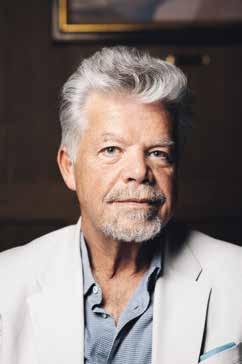
There’s Something About the East. Not only does the sun rise there, but so do stories, visions and – at times – enlightenment. Think of the three wise men who followed a star and arrived at a manger full of promise. In 2025, a modern version of that tale is unfolding near Maastricht: the opening of Van Oys Maastricht Retreat, set on the banks of the Meuse – or should we say: the Maes?
Because there, in the reborn Kasteel Oost, stands the new gastronomic beacon of South Limburg. A place where history, luxury and vision converge into a retreat of international stature. No stable here, but a castle. No straw, but suites. And no myrrh, but the finest flavours two culinary sages can offer.
Guido Braeken, the young Limburg chef who previously earned two Michelin stars at Château Wittem, leads his own creative sanctuary: Create. A restaurant that carries its name for good reason. Braeken cooks like an alchemist – with boldness, lightness and a refined sense of harmony. His dishes are not tricks, but compositions: balanced, surprising, and layered. Eastern ingredients and spices are not decorative exotica but a subtle undercurrent in
his signature. Yuzu, miso, black garlic, vadouvan – they are his contemporary frankincense and myrrh.
At his side stands Pascal Jalhay, the culinary mentor who also once earned two stars. Together they form a duo with a clear mission: to bring gifts – not to a newborn child, but to the discerning palate. And yes, they too follow a star. Not a heavenly one, but a critical, red one –the Michelin star that hovers above their ambitions and will cast its judgement in October.
Then there are the Maes brothers, the owners with an almost biblical sense of purpose. Mary and Joseph in tailored suits, with an eye for detail and a heart for their region. Their name flows naturally into the Meuse, the river that embraces the hotel – and perhaps even blesses it. The choice of location, the restoration, the sustainable Cittaslow philosophy: nothing at Van Oys is accidental. Everything breathes vision and a longing for timeless beauty.
Van Oys is not just a hotel. It is a contemporary cradle for those in search of rest, meaning and something greater than a place to sleep. It is a place where old stories are reborn in new forms – in stone, in hospitality, in flavours that linger.
Werner Loens, Former Chief Inspector Michelin Benelux
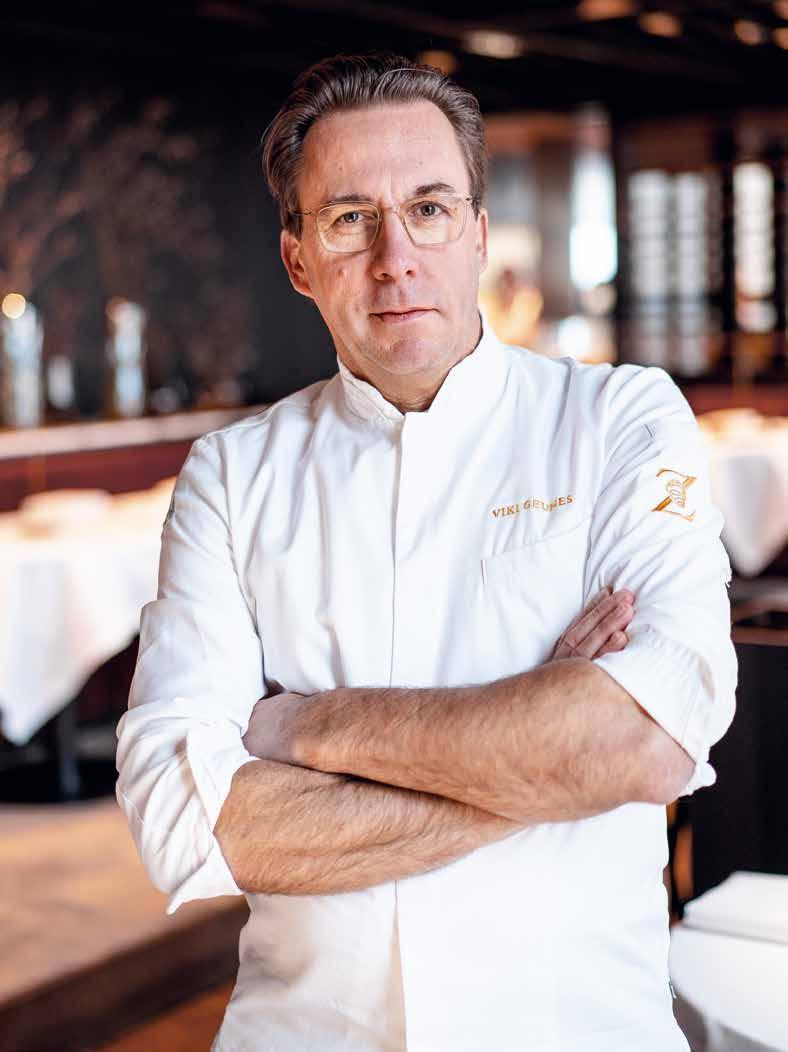
Text
Jo Cortenraedt
Photography
Van Oys Maastricht Retreat
IIn the world of Michelin-starred chefs, particularly those with two or three stars, it's common practice to collaborate with esteemed colleagues several times a year, both nationally and internationally. Since earning two Michelin stars at his former restaurant Julemont in Wittem, Guido Braeken – now head chef at Create at Van Oys Maastricht Retreat – has been invited to take part in numerous high-profile four-hands dinners. Now, he’s hosting one himself. And not just with anyone, but with three-star chef Viki Geunes of Zilte in Antwerp – one of only two chefs in Belgium currently holding this distinction.
This extraordinary culinary event will take place on Saturday evening, 28 June 2025 and Sunday afternoon, 29 June 2025 The experience begins with refined finger food and amuse-bouches, followed by six courses: three crafted by Geunes, three by Braeken.
‘I've known Viki from past trips to Prague and New York and have dined at Zilte several times,’ says Guido Braeken. ‘It’s an honour to welcome him to Van Oys and to create a menu together with my team.’
Viki Geunes first met Van Oys Managing Director Marc Alofs during the early stages of Botanic Sanctuary Antwerp. ‘We’ve kept in touch ever since. I also share a great connection with Guido, so this collaboration came about naturally. Our chosen menu will be a harmonious blend of both culinary identities, showcasing the best of our restaurants.’
Geunes is also the founder of the Exquis event series at Zilte, where he hosts renowned international chefs for collaborative dinners.
Previous guests include Arnaud Donckele (Plénitude ***, Paris), Eric Vildgaard (Jordnær ***, Copenhagen), and Dominique Crenn (Atelier Crenn ***, San Francisco).
‘This year’s line-up is equally exciting,’ says Geunes, ‘and we’re also bringing Exquis on the road – starting with Van Oys.’
Guido Braeken continues to build his global network. He recently travelled to Steirereck in Vienna, which has just been awarded its third Michelin star. ‘I want to be present in my own kitchen as much as possible, but since

we’re only open four days a week, I use my free time for these kinds of exchanges,’ he explains. ‘If you want to play in the top league, you need to look beyond borders – and that’s exactly our ambition at Van Oys.’
The Menu: Braeken will present several new dishes reflecting the flavours of the summer season. Price: €585 per person, includes: aperitif, full tasting menu, wine pairings, water and coffee. Reservations: www.vanoys.com
NATURE surrounding Van Oys Maastricht Retreat provides peace and beauty. This nature also serves as inspiration within the estate itself. Here, the principle of CITTASLOW, to treat both nature and people with respect, is put into practice every day.
Text
Jo Cortenraedt
Photography
Rowena Rutten
For the owners Michel and Leon Maes, it’s not just a label but a genuine foundation of their philosophy. Beautiful products sourced from the region don’t have to come from far away, preferably as natural as possible. Leon Maes isn’t the one who deals with these products daily, but he is very much in favour of the idea. ‘I have always said that we should value our Limburg region more. The guests who come here are amazed by the quality of life. So I see that as a great asset.’ Two years before the hotel’s opening, Kasteel Oost was awarded the title of ‘Cittaslow Ambassador’ by the municipality of Eijsden-Margraten, which has officially embraced the Cittaslow philosophy, a way of thinking and acting originally from Italy.
Michel Maes already had many ideas in this direction when he still lived in the castle himself. ‘I like to cook myself. Not at a Michelin-star level, no, but I do want good products. There are more and more reports that industrially processed food is not good for people. In that process, all kinds of substances are added, and you can wonder how the body reacts to them. So I think it’s good for our health if we eat as naturally
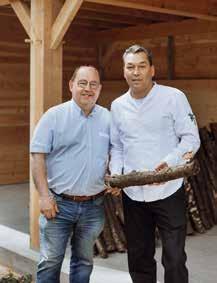
as possible. And it’s even better if it tastes good. More and more, I notice that natural products simply taste better.’
He has found a convinced ally in Pascal Jalhay. The experienced chef has spent a lot of time recently searching for small suppliers who work organically and has discovered that there is plenty to find in the immediate area. ‘For example, we have a dish with dried grape leaves from
the Apostelhoeve vineyard in Maastricht, combined with, among other things, horseradish from our own gardens. There are many more examples like this. I’m really looking forward to the products we are working on ourselves; it will become an increasingly broad range.’
He’s referring to the plans for a large vegetable garden close to the castle, an herb garden on the estate itself and all the products that Michel is driving forward.
‘I’ve always wanted to be a farmer. I’m interested in baking bread, making sausages and jam, producing our own wine, and so on. We’ve even purchased nearby meadows with high-stem fruit trees.’
These initiatives are already producing quite a few homegrown delicacies. Restaurant Create receives daily bread from its own bakery, which will eventually expand to serve the entire location. The first smoked hams have already been delivered, as well as jams. The grapevines have been planted and from the castle terrace, you can see a new beautiful garden house where thick logs are neatly stacked for cultivating shiitake mushrooms – a very refined mushroom that both chefs and their guests adore.
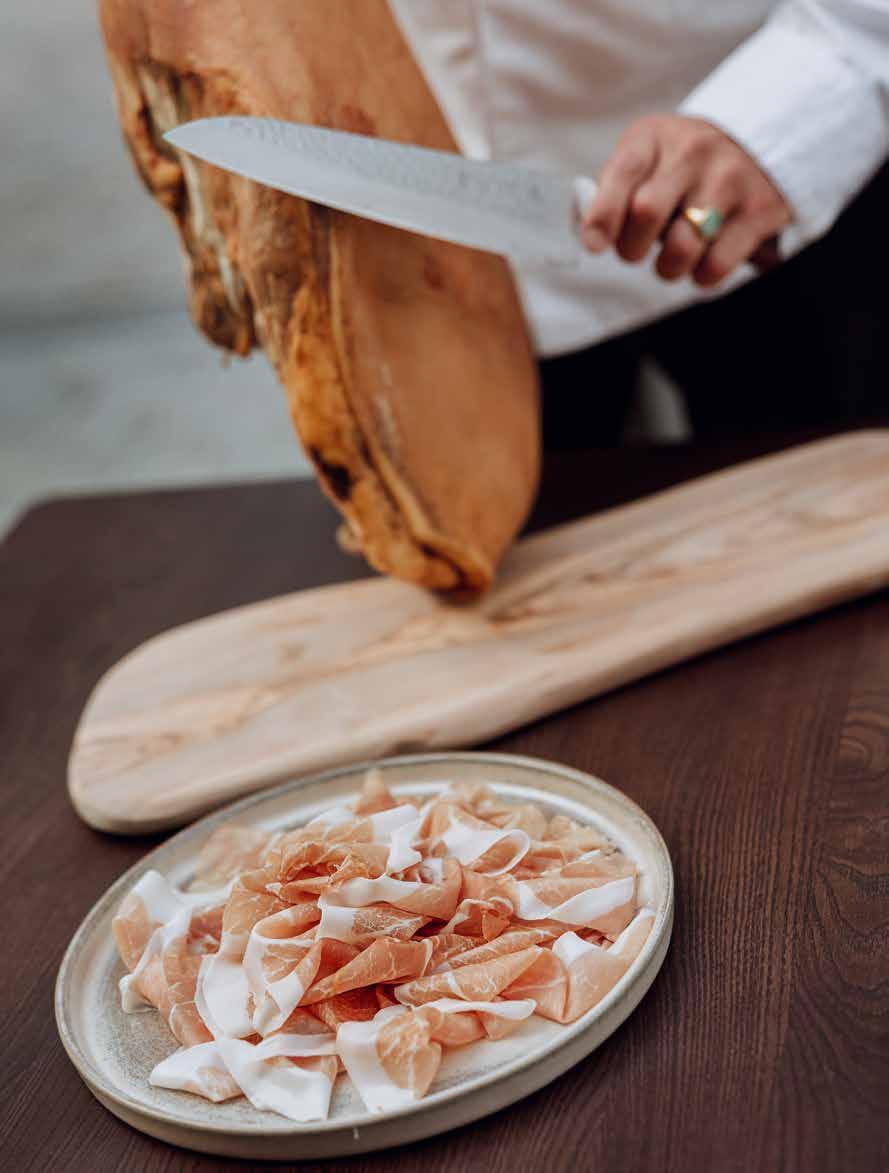
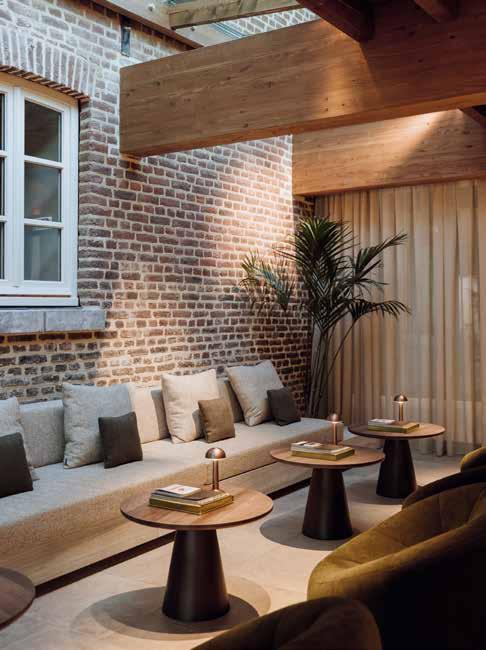
Since the start of its construction phase in May 2024, Van Oys Maastricht Retreat has been a member of Leading Hotels of the World (LHW), the most prestigious hotel organisation worldwide. LHW brings together over 400 luxury hotels across more than 80 countries and applies very strict selection criteria. Membership is both an honour and a DISTINCTION.
17 May 2024. A date that will long be remembered by Michel and Leon Maes, the proud owners of Van Oys Maastricht Retreat in Eijsden-Margraten. In an official letter, chairman Andrea Scherz and president & CEO Shannon Knapp confirm that Van Oys Maastricht Retreat has been accepted as a member of Leading Hotels of the World. In their letter, they express being truly impressed by the spectacular transformation of the 13thcentury castle, the high-quality culinary offerings and the Cittaslow sustainability concept.
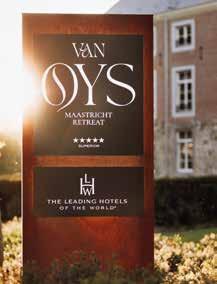
The Leading Hotels of the World, headquartered in New York, has existed since 1928 and is the world’s most prestigious hotel brand. LHW represents over 400 independently owned luxury hotels in more than 80 countries, including eight in the Benelux: De L’Europe, Okura, and The Dylan in Amsterdam; Hotel Des Indes in The Hague; Van Oys Maastricht Retreat in Maastricht; Hotel Amigo in Brussels; Botanic Sanctuary in Antwerp; and Le Royal Hotel in Luxembourg.
Among the founding members are wellknown French and British hotels such as Le Negresco, Hotel de Paris, Hotel
Hermitage, The Ritz and The King David. Only independent five-star hotels with exceptionally high service standards, unique ambiance and extraordinary locations are eligible for membership.
A recent focus for LHW is its strong commitment to inclusion and sustainability, reinforcing its position as a frontrunner in the hospitality industry.
As mentioned, LHW hotels meet the highest standards of comfort, service, safety and
positioning: five-star superior with a highlevel culinary offering and an exceptional location outside the city, just a stone’s throw from the centre.’
‘The local colour is embodied in the Cittaslow concept, which runs like a thread through everything we do – and don’t do. For example, our chefs use fresh, seasonal, locally sourced products from nearby suppliers. Our connection to the local community and lifestyle in this corner of the Netherlands is also reflected in our choice of building materials and the names of our Château
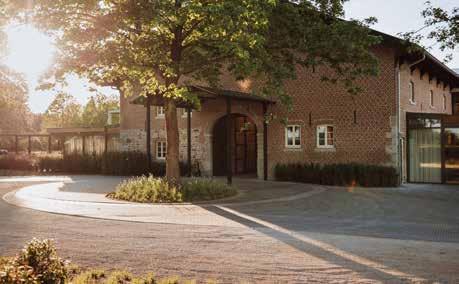
hygiene. A key characteristic is their distinctive connection to the location. According to managing director Marc Alofs, this local connection was decisive in evaluating Van Oys’ application – besides the fact that he was already familiar with LHW.
‘In my role as managing director, I succeeded in 2020 in gaining membership for Botanic Sanctuary Antwerp in Leading Hotels Of The World. I was familiar with their way of working and their strict selection criteria. They knew me, as well as the management team who made the transition to Van Oys. From the start, it was clear to everyone involved that Van Oys would not become just another city hotel in Maastricht. We envisioned a unique market
suites and meeting rooms. These refer to noble families who once lived in the castle, or to local harmony societies and shooting clubs.’
Marc Alofs: ‘Membership is granted for a period of five years, which can of course be renewed. This gives both parties the necessary time and space to develop a successful partnership. LHW represents the absolute top and opens the gateway to the rest of the world. LHW has a very dynamic and efficient sales and marketing organisation that reaches an international and affluent audience who travel frequently and are likely familiar with events like TEFAF or artists like André Rieu.’

Mercedes-Benz is the oldest car brand and has contributed to the technological development of the automobile like no other. With the revival of the luxury brand Maybach in 1997, Mercedes aimed to reshape the hierarchy of the AUTOMOTIVE WORLD.
What wars are good for. After the First World War, German companies were no longer allowed to build engines for zeppelins. For Wilhelm Maybach and Ferdinand Graf von Zeppelin, this was the signal to shift their focus and start building luxury cars under the Maybach brand name.
REBIRTH
The Second World War marked the end of Maybach as an independent car brand. In 1960, Maybach resumed its activities under the wing of
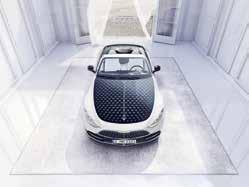
Mercedes-Benz, producing special series on request. This collaboration culminated in the launch of the Maybach 57 in 1997, followed a few years later by the Maybach 62. The Mercedes-Maybach S-Class, based on the extended version of the Mercedes S-Class, debuted in 2014 and firmly reestablished Maybach's presence. With the revival of the luxury marque, Mercedes-Benz aimed to redefine the hierarchy in the automotive world.
With the second generation of the Mercedes-Maybach S-Class, launched in 2021, Mercedes truly lives up to its ambitions. Compared to the long-wheelbase version of the regular S-Class, the Maybach features an 18cm longer wheelbase, entirely benefiting the rear compartment. Thanks to the executive seats, the second row is transformed into an ultra-luxurious and comfortable space for both work and rest. The Mercedes-Maybach S-Class combines the cutting-edge technology and engineering perfection of Mercedes-Benz with the luxury, exclusivity and refinement of Maybach. On board, a serene silence prevails, offering a sanctuary-like experience, one that makes you feel like royalty. Worldrenowned musician and proud Maastricht native André Rieu knows this all too well.
With the Mercedes-Maybach SL 680 – a refined derivative of the
handling.
Mercedes-AMG SL – the luxury brand sets its sights on the niche market of exclusive two-seater roadsters. While the MercedesMaybach SL 680 is powered by the same 4.0-litre V8 biturbo engine as the AMG SL 63 and sprints from 0 to 100 km/h in just 4.1 seconds, its focus lies far more on pure luxury and effortless cruising than on outright speed. Variable all-wheel drive ensures optimal traction in all conditions, while rear-axle steering contributes to agile and stable
On the outside, the Mercedes-Maybach SL 680 Monogram series stands out with bespoke paint finishes, signature Maybach lettering, a prominent upright star on the hood, and aerodynamic double domes behind the seats. Chrome is generously applied from the sleek hood fins to the windshield frame and side sills adding to its opulence. Rosé gold accents adorn the headlights, while 21-inch forged wheels in either 5-hole monoblock or multi-spoke design emphasise the car’s exclusive character.
The well-insulated acoustic soft top is finished in a subtly black fabric adorned with an anthracite Maybach pattern. At the rear, the car features taillights with the distinctive Maybach light signature, a unique diffuser panel, and tailpipes with a horizontal bar. Inside, the cabin is wrapped in sumptuous MANUFAKTUR Crystal White Exclusive Nappa leather, soft to the touch, elegant in appearance, extending from the door panels to the centre console and comfort seats. A digital driver display, and an electrically adjustable multimedia screen greet the driver and passenger with dedicated Maybach startup animations. Naturally, the Mercedes-Maybach SL 680 is equipped with state-of-the-art assistance and infotainment systems – and it does all this without producing an ear-splitting engine roar. Quiet enjoyment is the mantra aboard the Mercedes-Maybach SL 680 Monogram series, a car that fulfils its luxurious mission down to the finest detail. Mission completed.
Photography Mercedes-Maybach
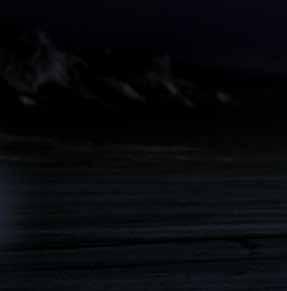
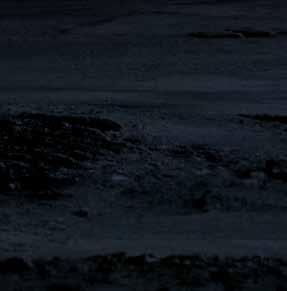
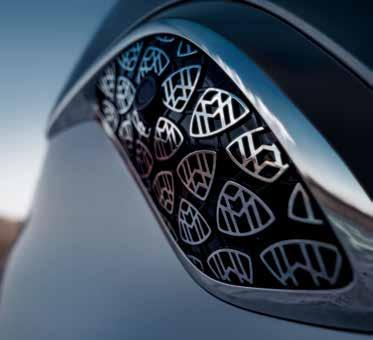



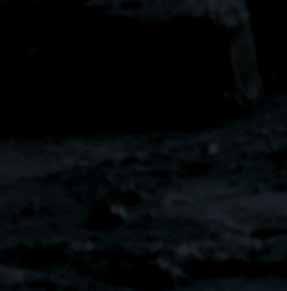
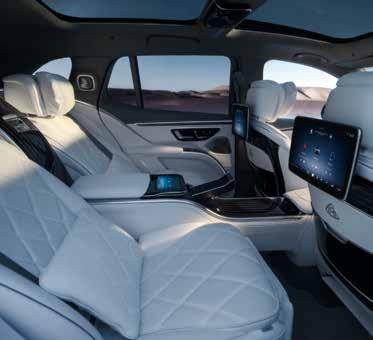


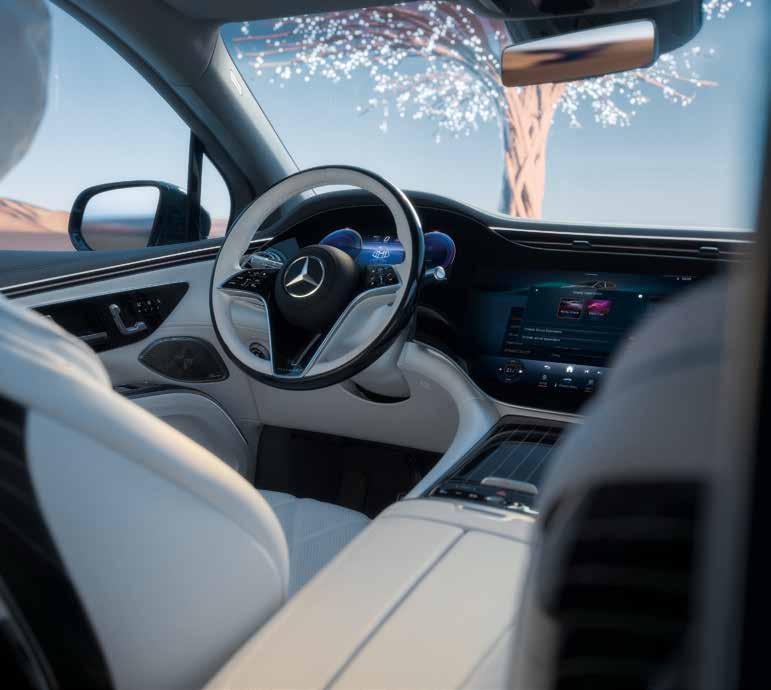
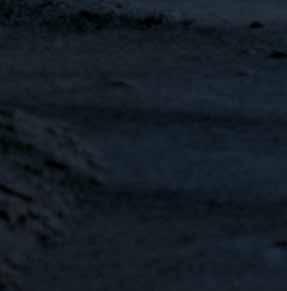


Het interieur van de Mercedes-Maybach EQS SUV overtreft al uw verwachtingen: exquise materialen en meesterlijk vakmanschap, uitzonderlijk comfort met cocooning effect, innovatieve technologie en bovendien vele individuele details.
www.mercedes-benz.nl/mm-eqs-suv

Gecombineerd verbruik: 21,9 - 23,7 kWh/100 km. CO₂-emissie 0 g/km (WLTP).







